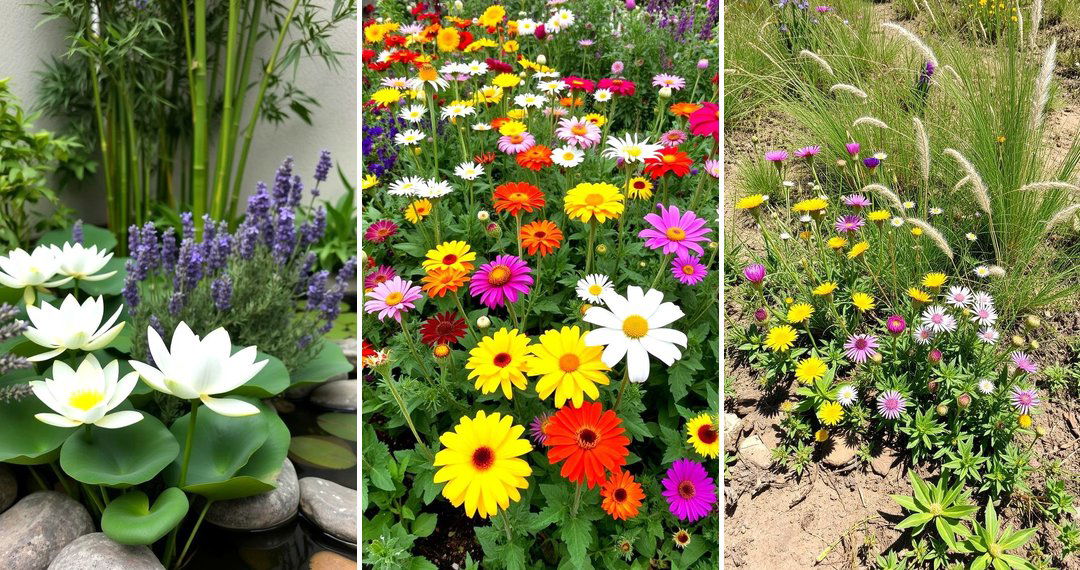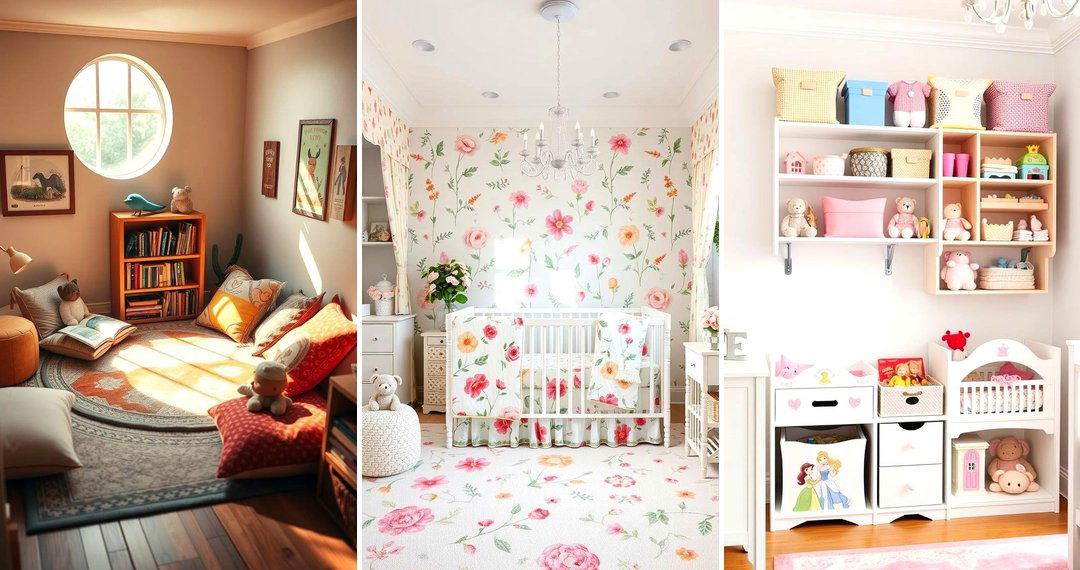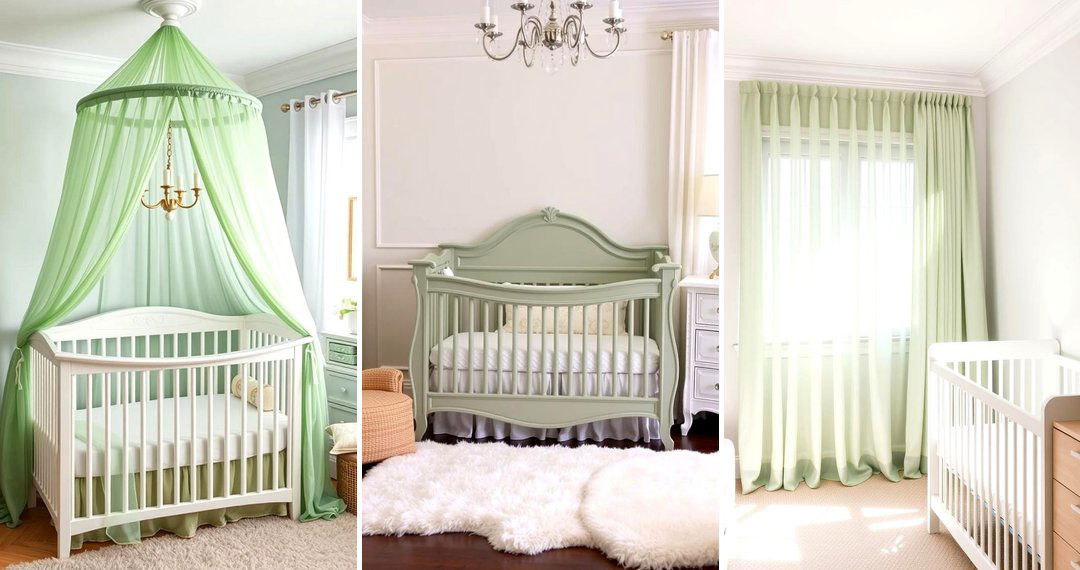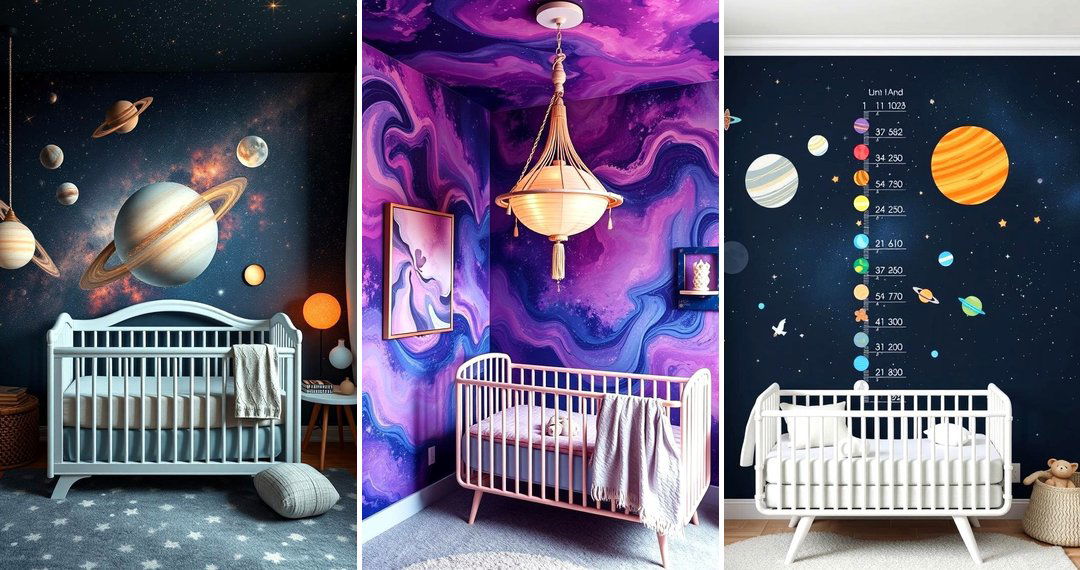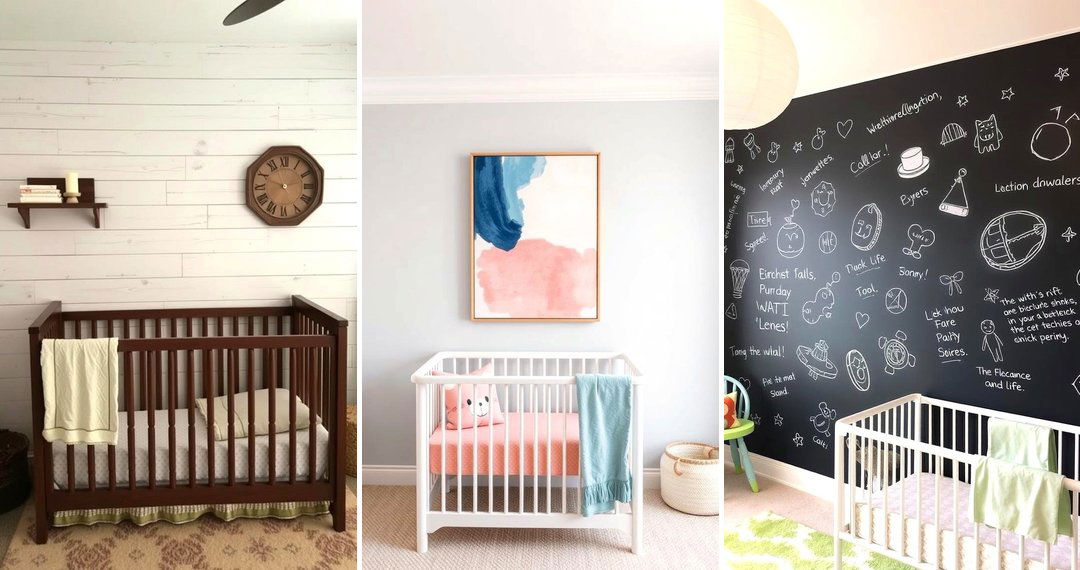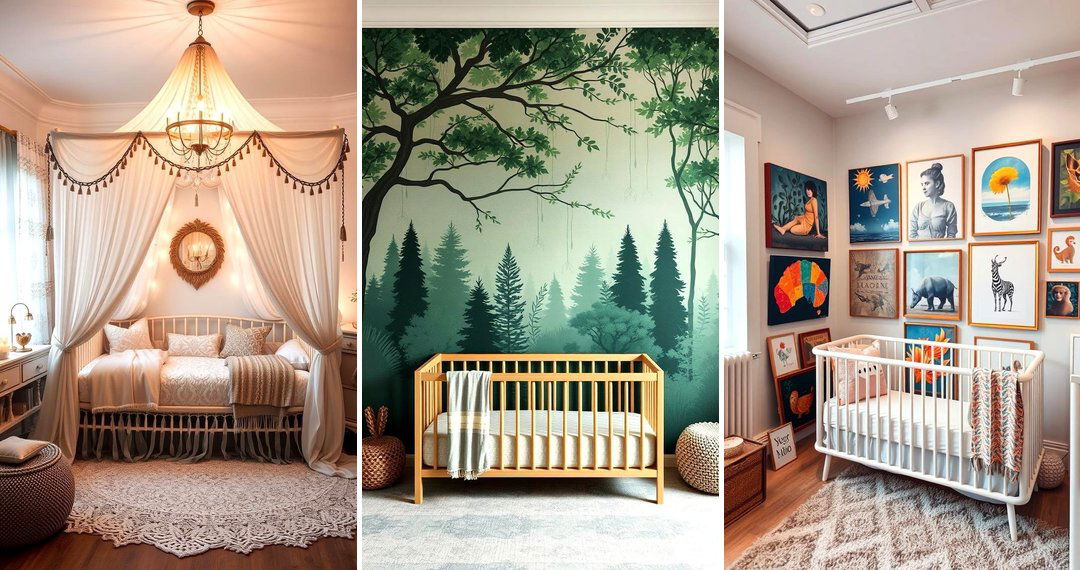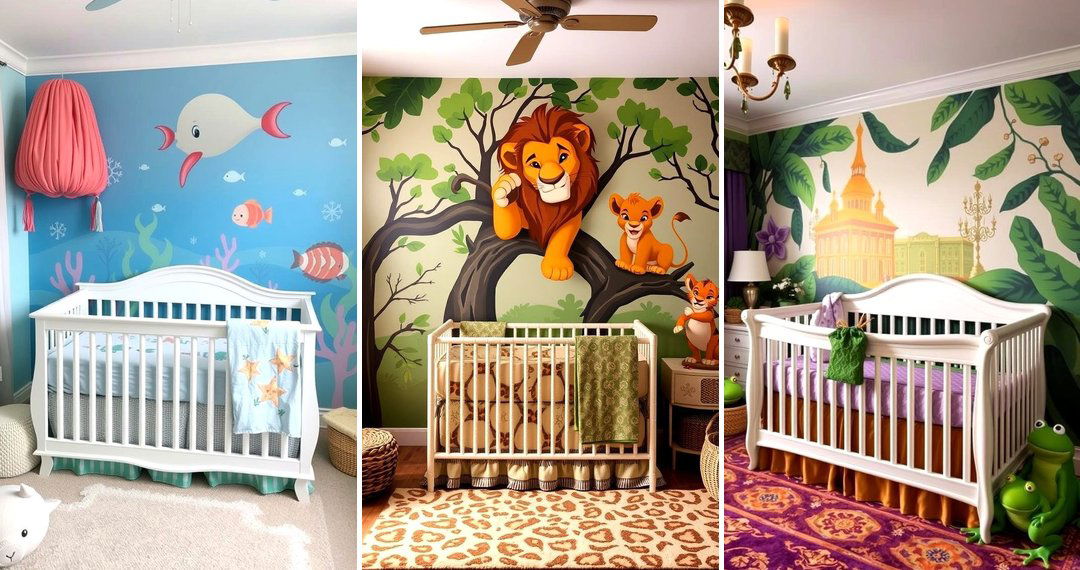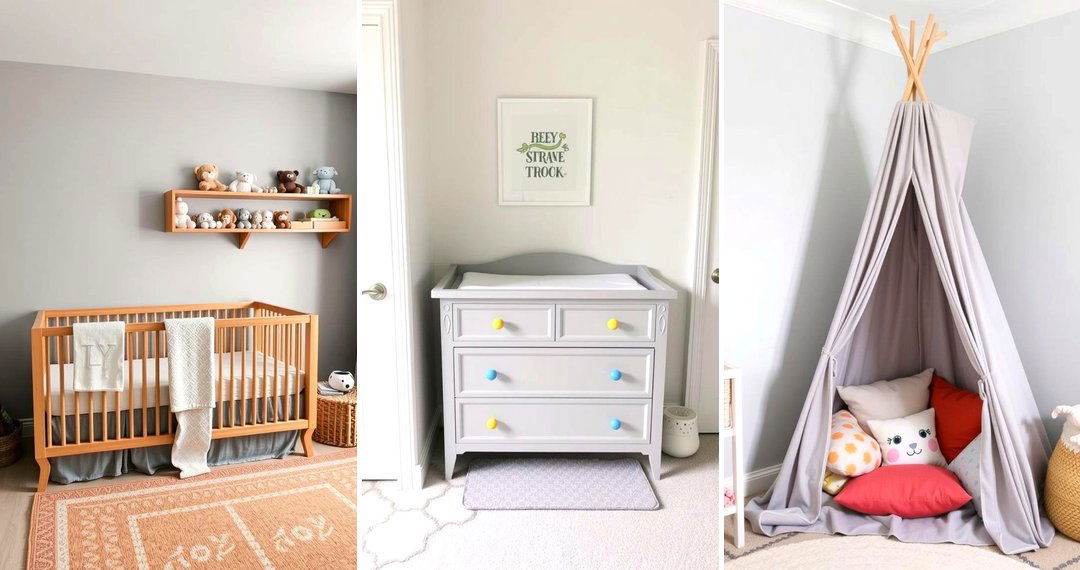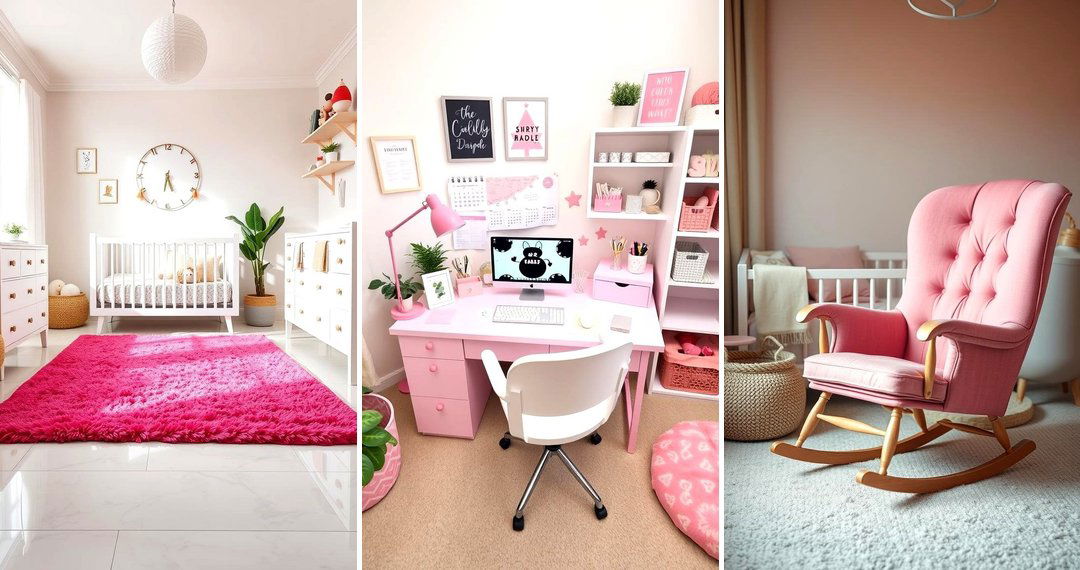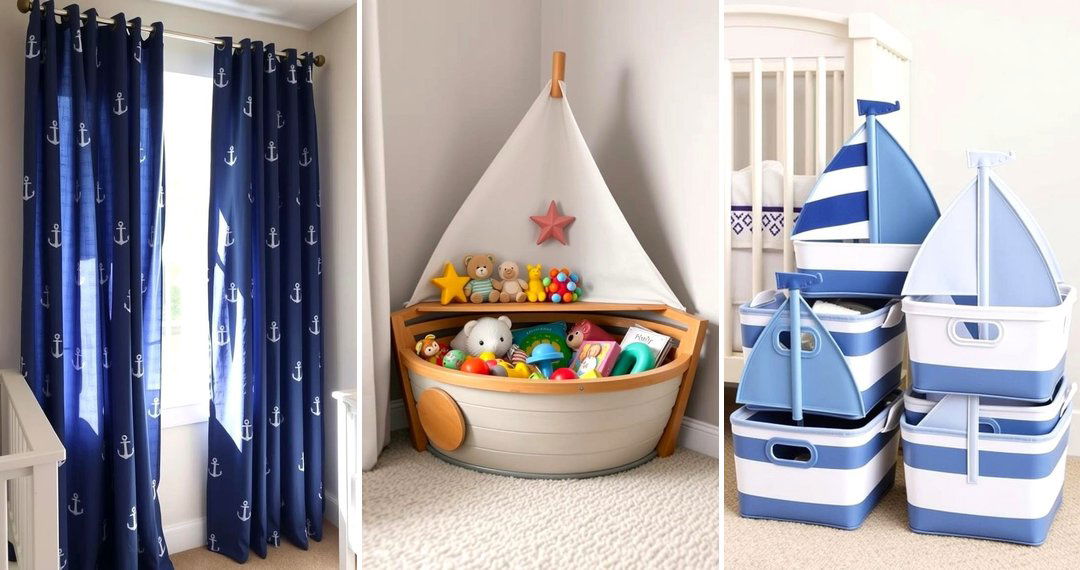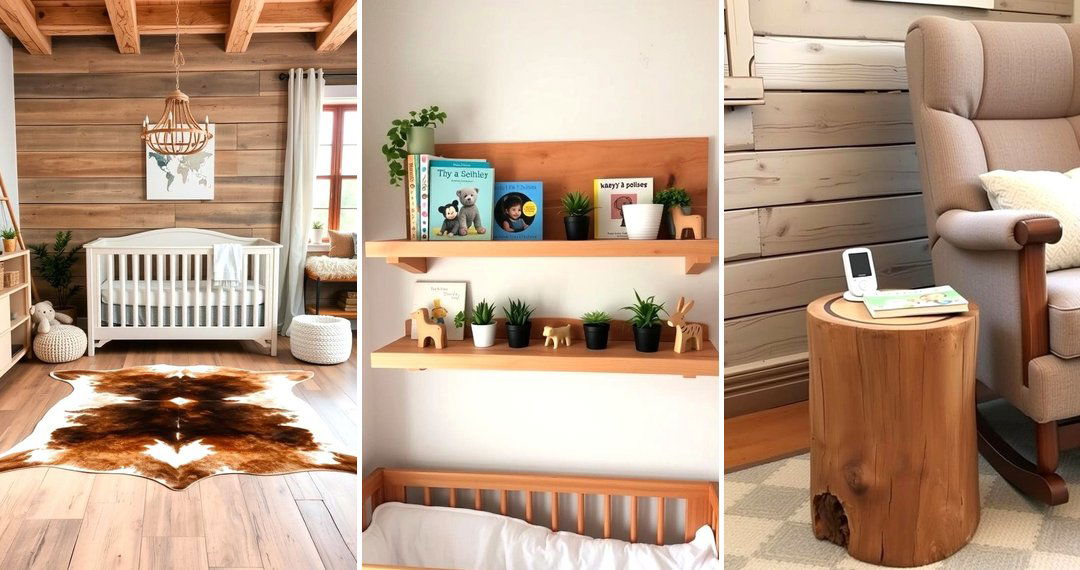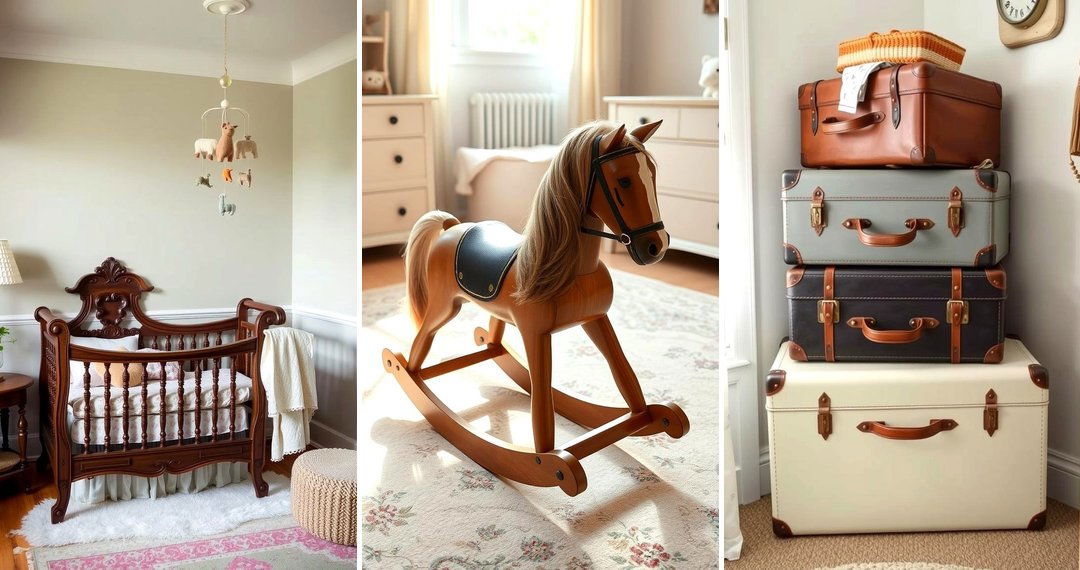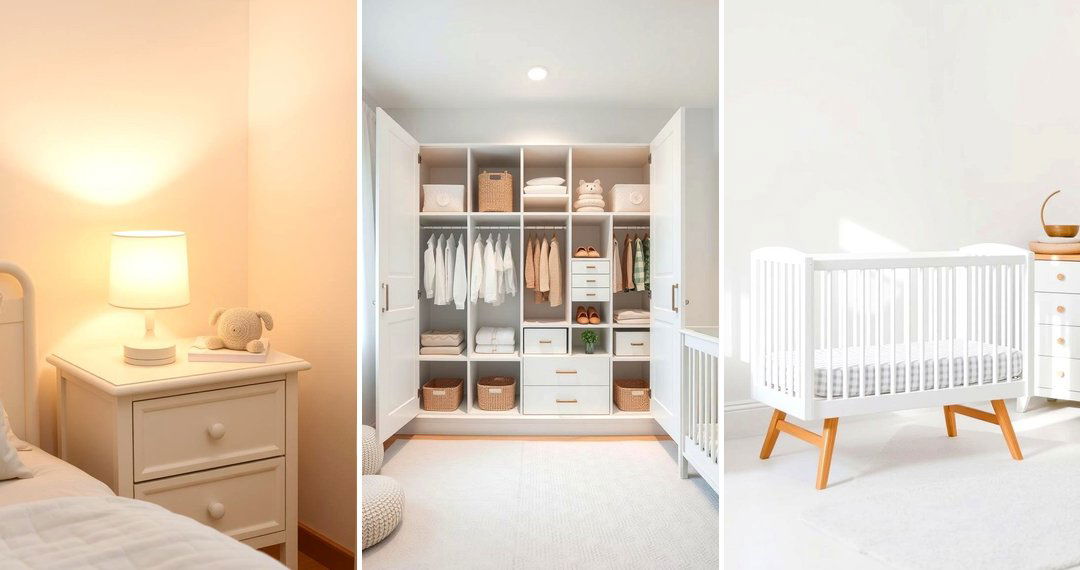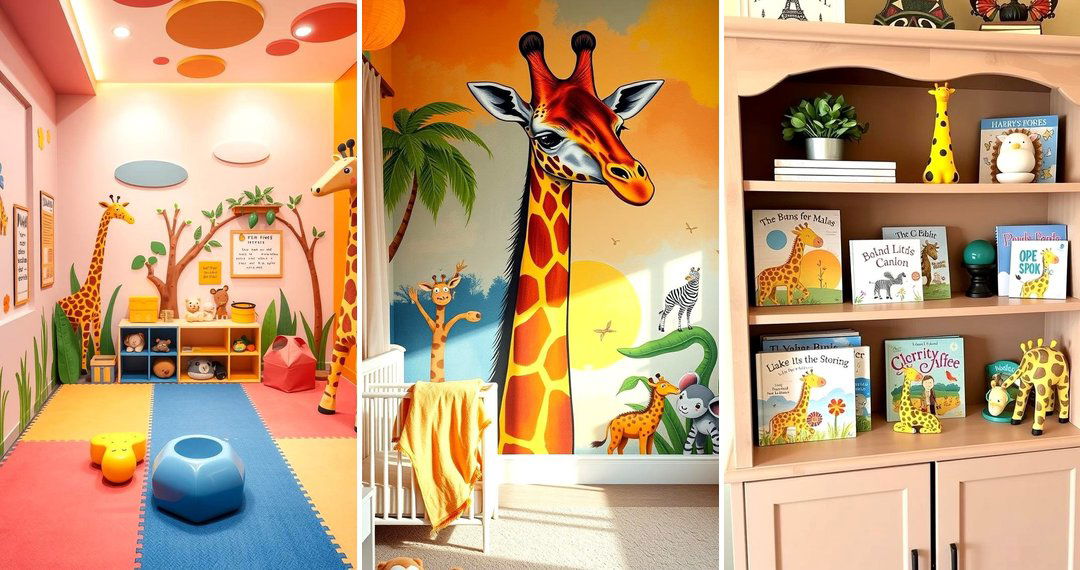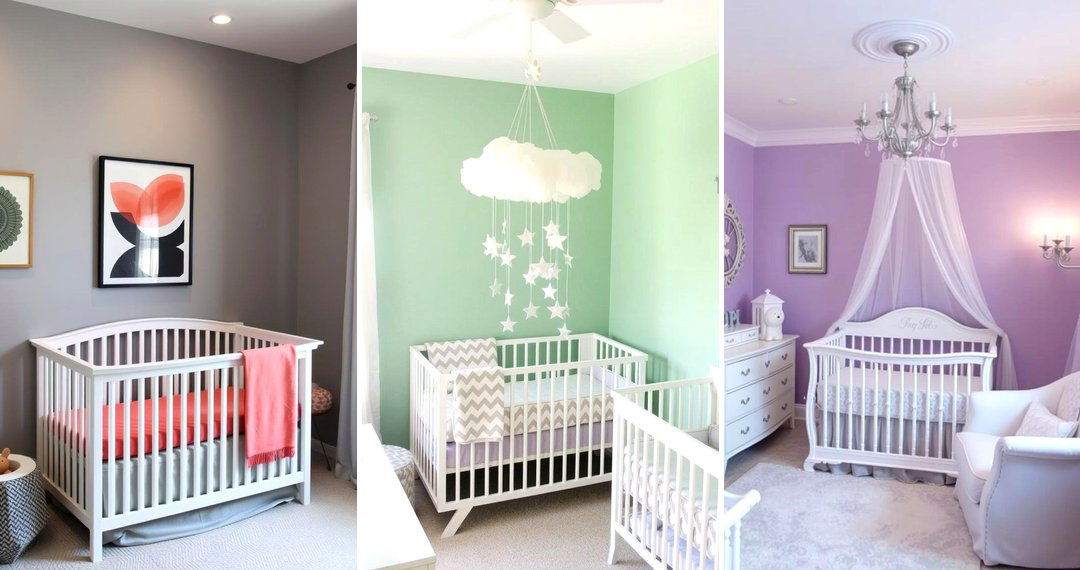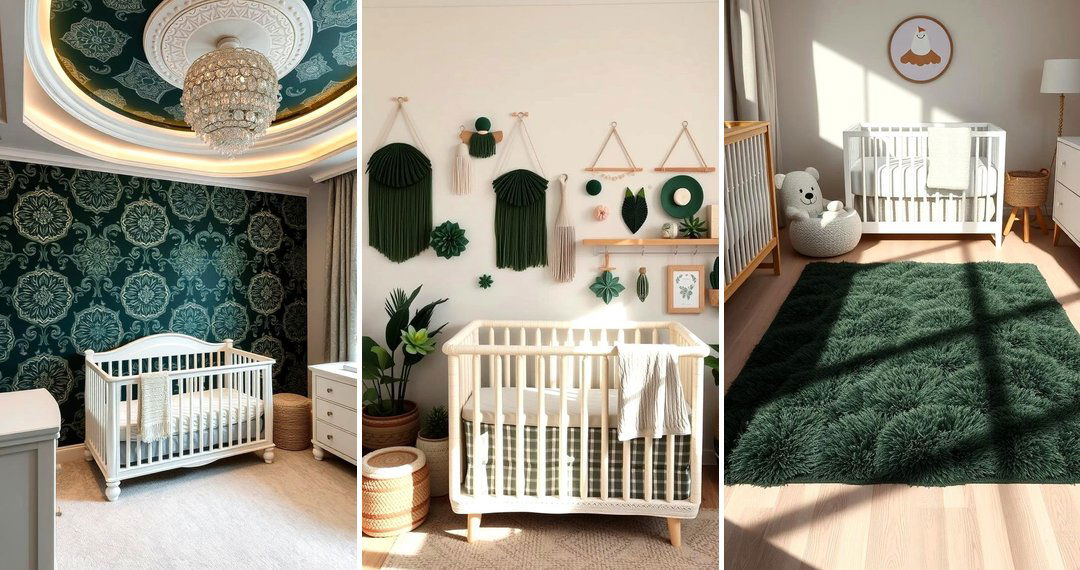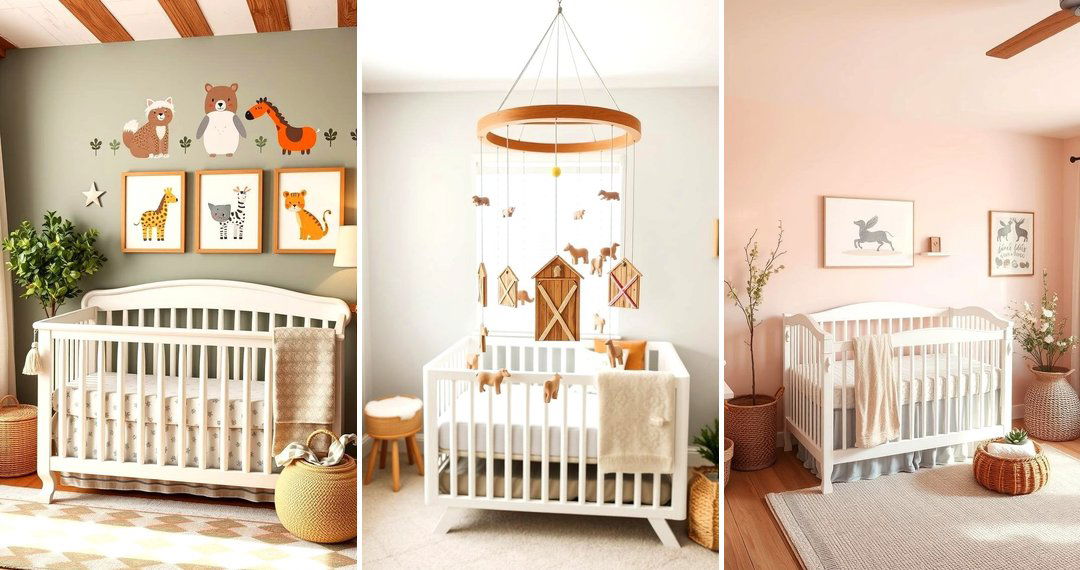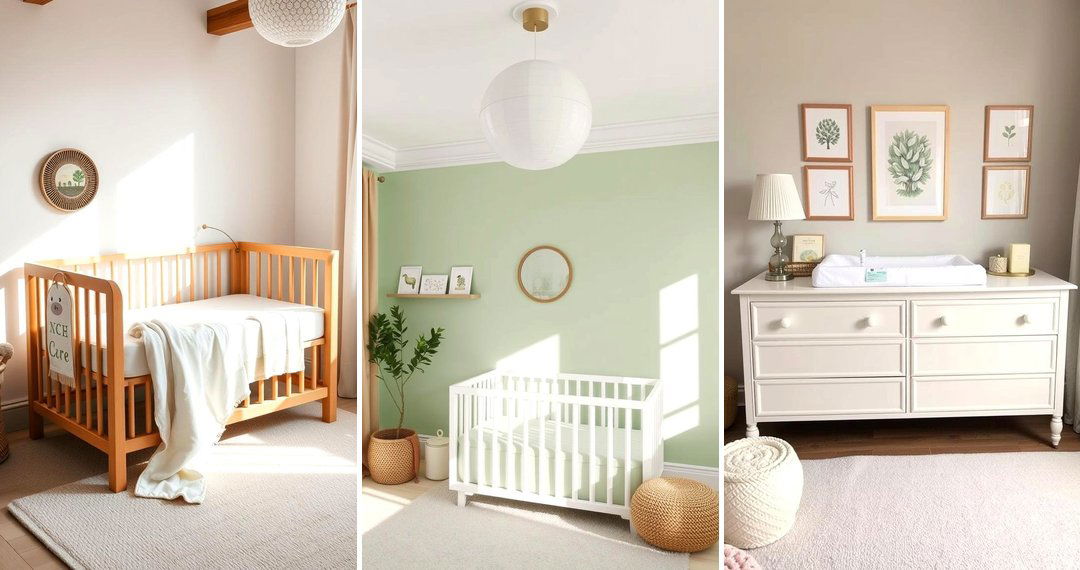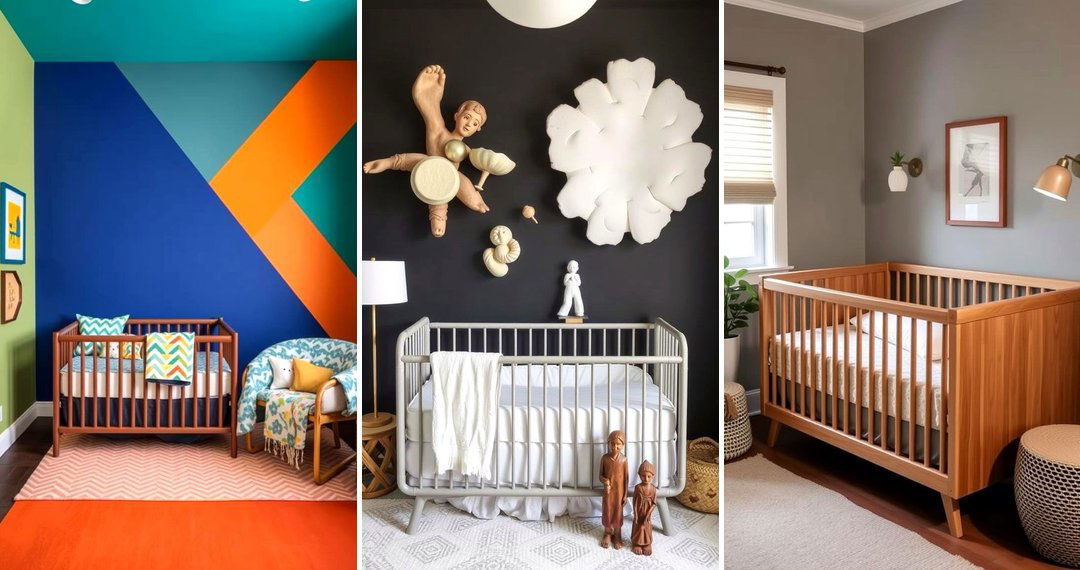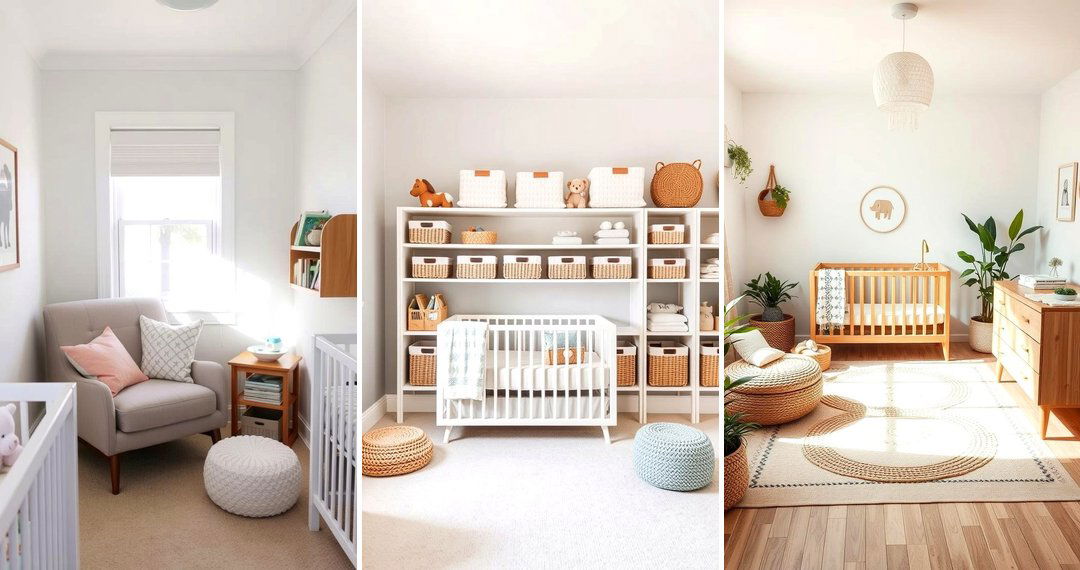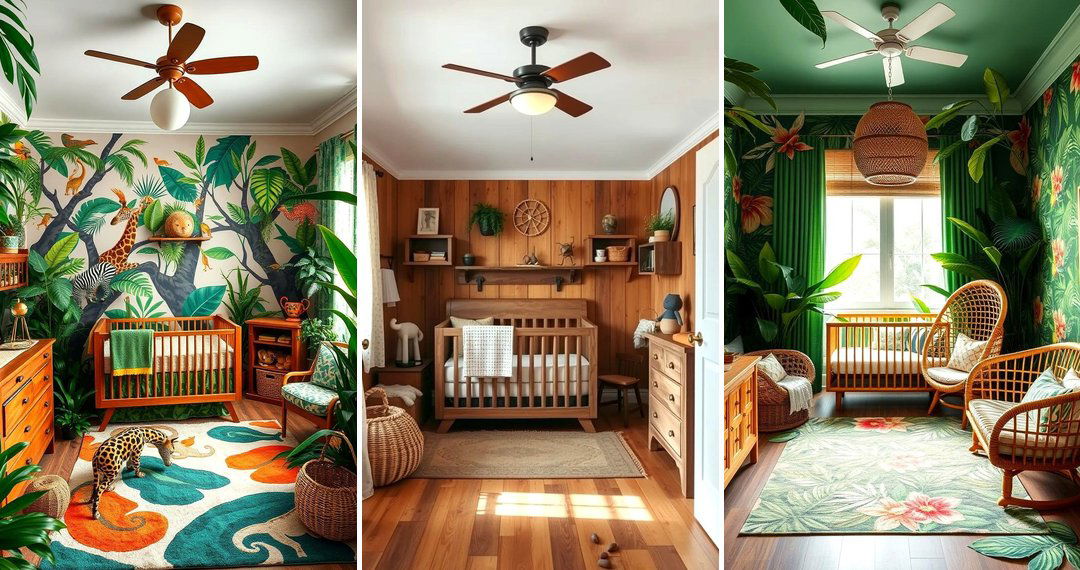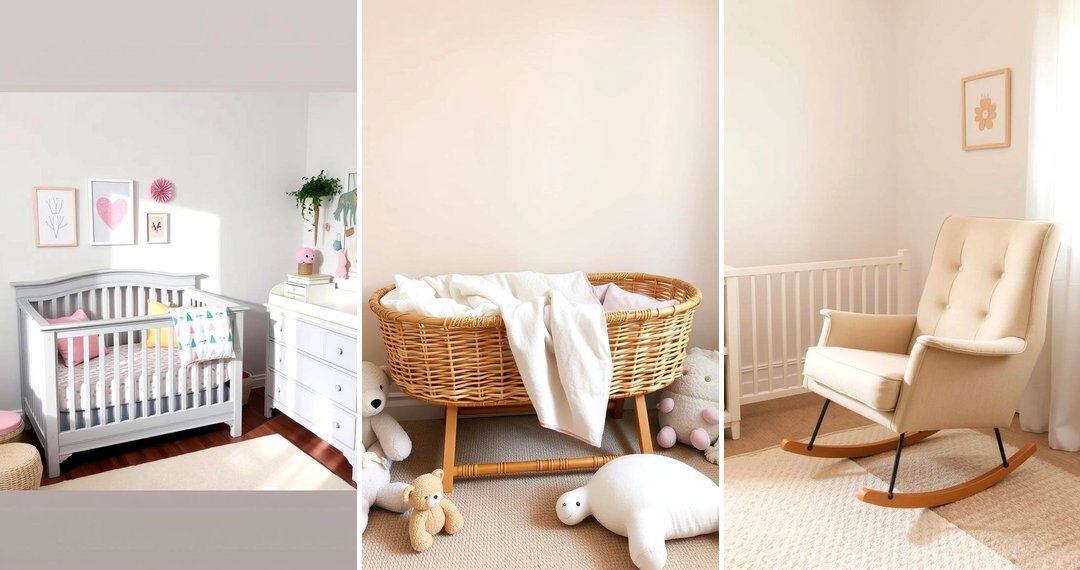Introduction:
Creating a Montessori-inspired nursery is a fantastic way to promote independence, creativity, and learning from an early age. The Montessori approach emphasizes child-centered design, where the space encourages exploration, interaction, and discovery. By incorporating the right elements into a nursery, parents can set up an environment that not only nurtures their child's development but also fosters a sense of curiosity and autonomy. From simple furniture choices to thoughtful educational tools, Montessori-inspired ideas help create a harmonious space for young minds to thrive. Continue exploring these 24 Montessori nursery ideas for practical tips on transforming your nursery into a place of learning and growth.
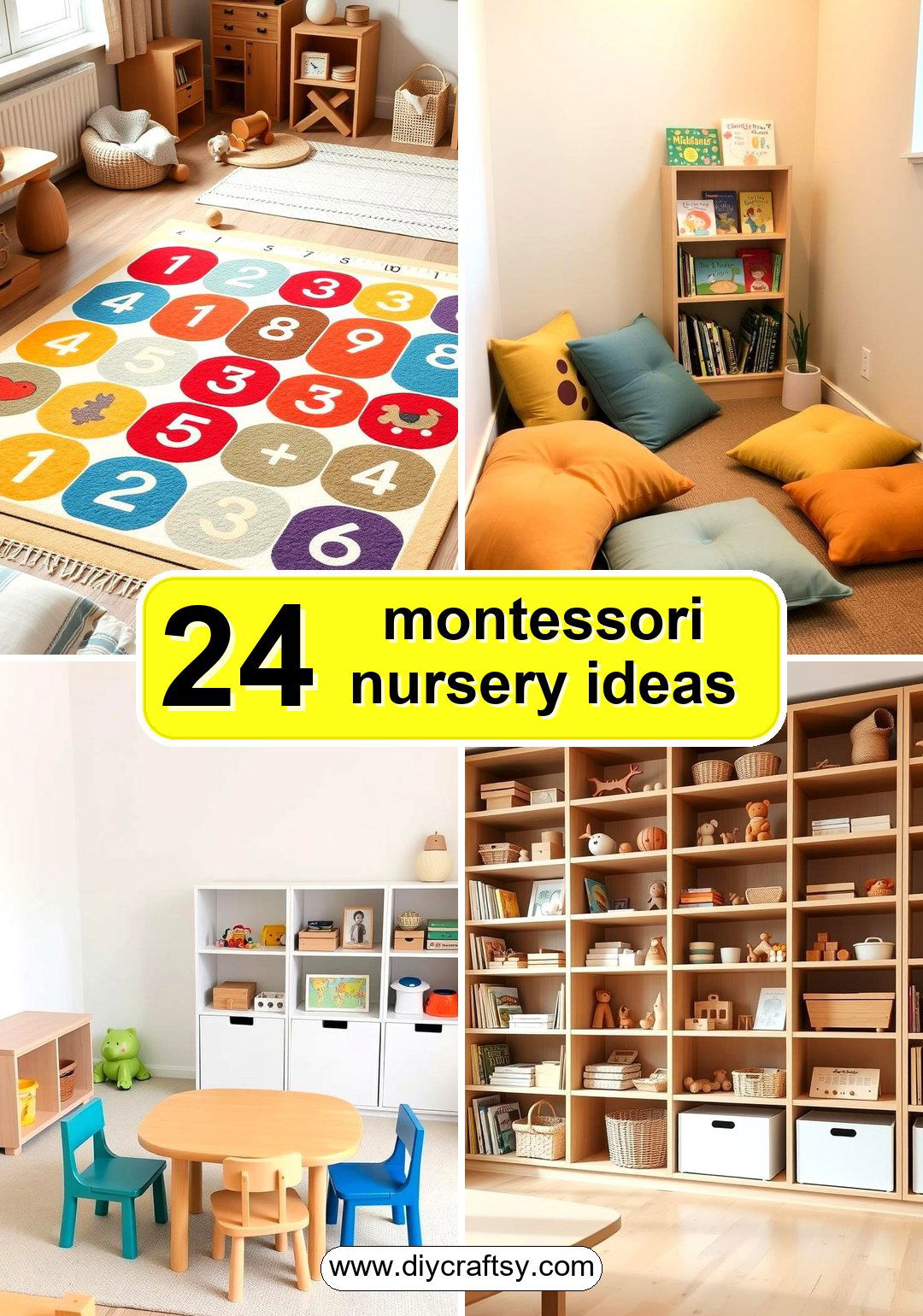
1. Low-to-the-Floor Furniture
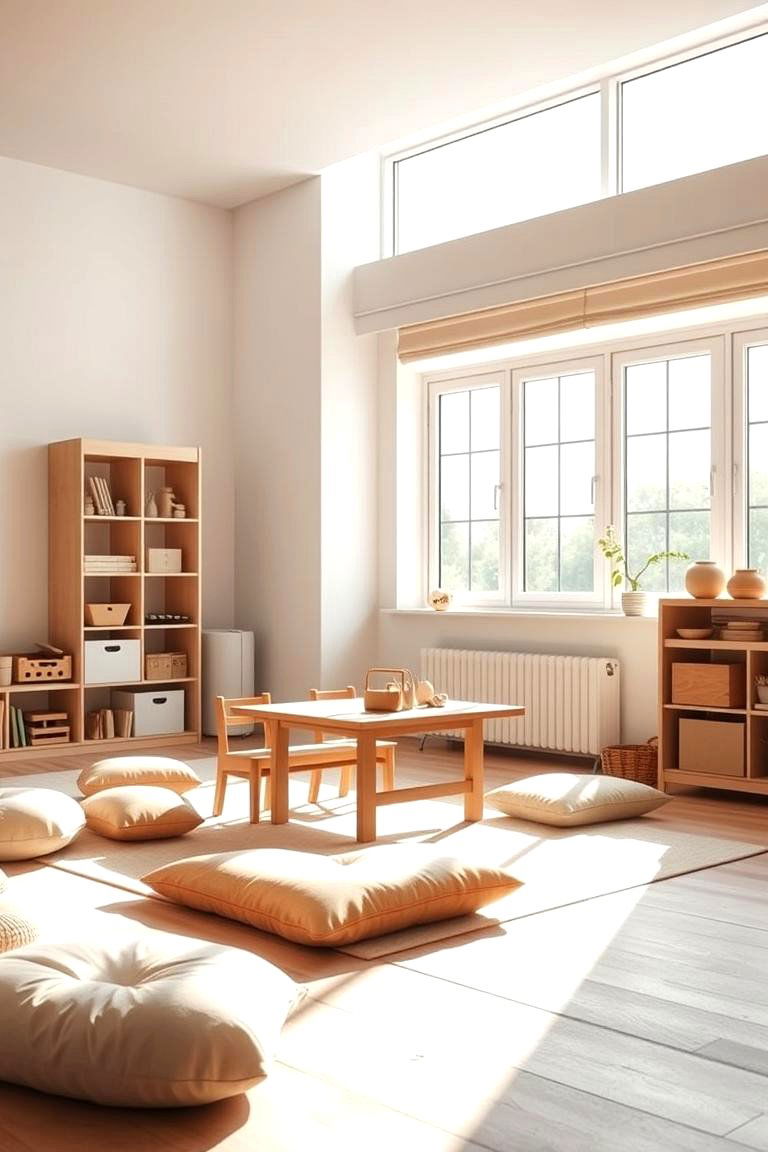
When you think about a Montessori nursery, one of the first things to consider is the furniture layout. Low-to-the-floor furniture allows babies and toddlers to explore freely. This setup gives them the independence to sit, stand, and play without needing adult assistance. It also encourages motor skill development as children can access toys and activities at their level. Keep things minimal to avoid overwhelming your little one, and choose furniture that is easy for them to navigate, ensuring both functionality and safety.
2. Open Shelving for Easy Access
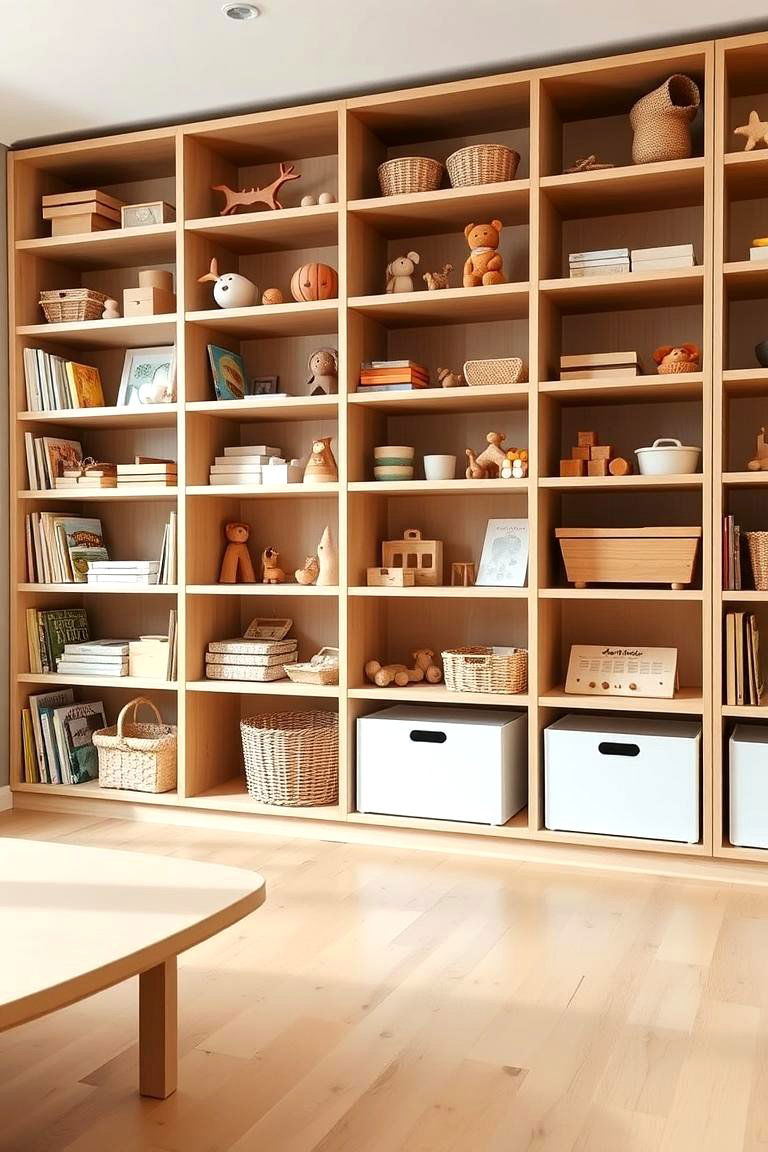
In a Montessori nursery, open shelving plays a vital role in promoting independence. By using open shelves, children can easily access their toys and books, encouraging them to choose activities based on their interests. This promotes decision-making skills and autonomy, allowing little ones to take charge of their playtime. Furthermore, it also encourages responsibility, as they can return items to their place once they are done. Keep items at eye level and in small baskets for an organized and inviting environment.
3. Natural Lighting and Soft Fabrics
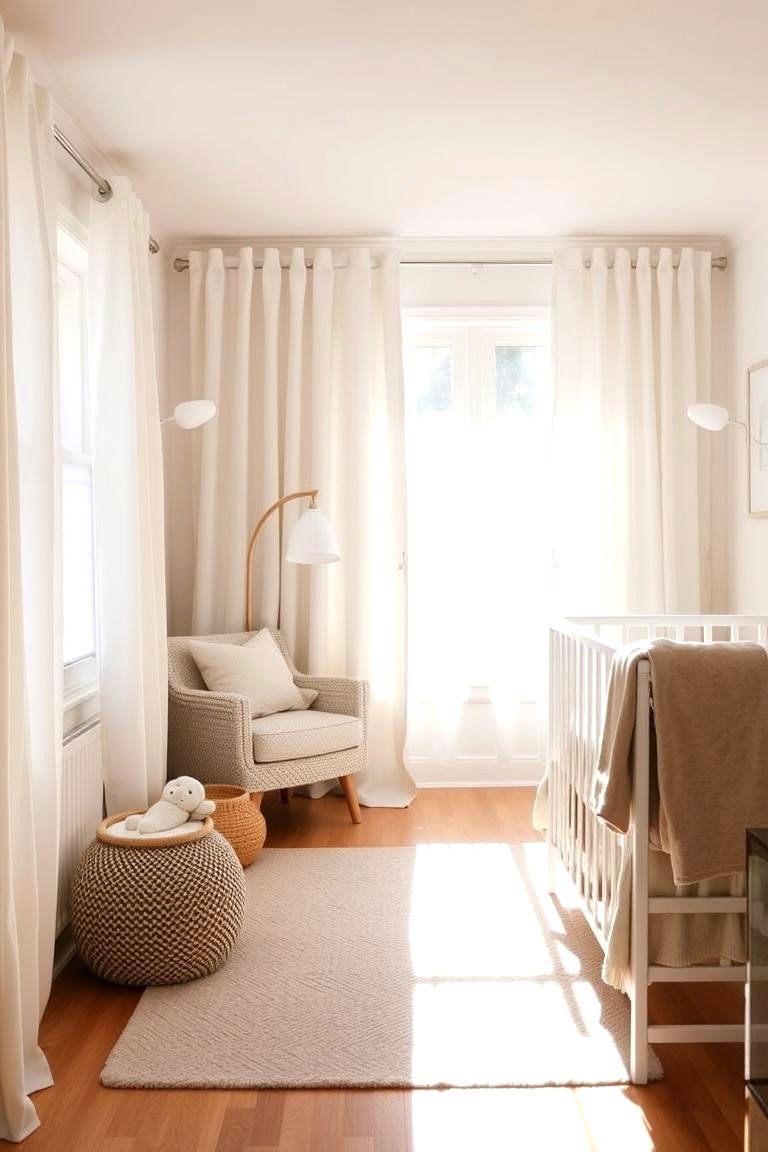
Soft natural light and cozy fabrics create a warm and inviting environment for babies. Montessori principles emphasize the importance of sensory experiences, and natural lighting plays a key role in creating a calm and nurturing space. Soft fabrics such as cotton, linen, and wool add texture to the room while ensuring comfort and warmth. Let natural light flow in during the day by using sheer curtains or blinds, making the room feel open and airy. This simple, natural approach helps establish a peaceful atmosphere that promotes relaxation and exploration.
4. Child-Sized Furniture and Tools
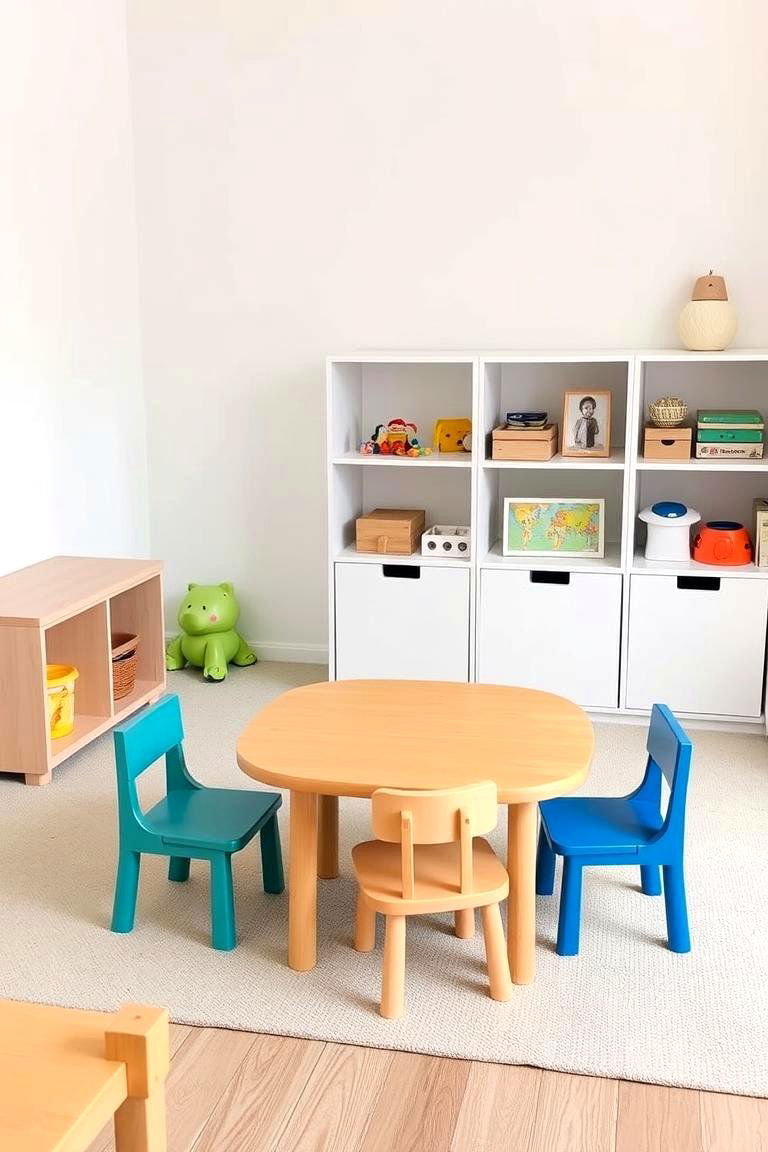
A hallmark of Montessori design is providing child-sized furniture and tools. This includes low tables, small chairs, and functional tools that are easy for little hands to use. Having furniture and tools that are made for their size helps children feel more confident and capable in their environment. It also promotes fine and gross motor skills as they reach, grasp, and move in ways that suit their development. Select furniture that will grow with your child, allowing for gradual independence and confidence as they grow.
5. A Cozy Reading Corner
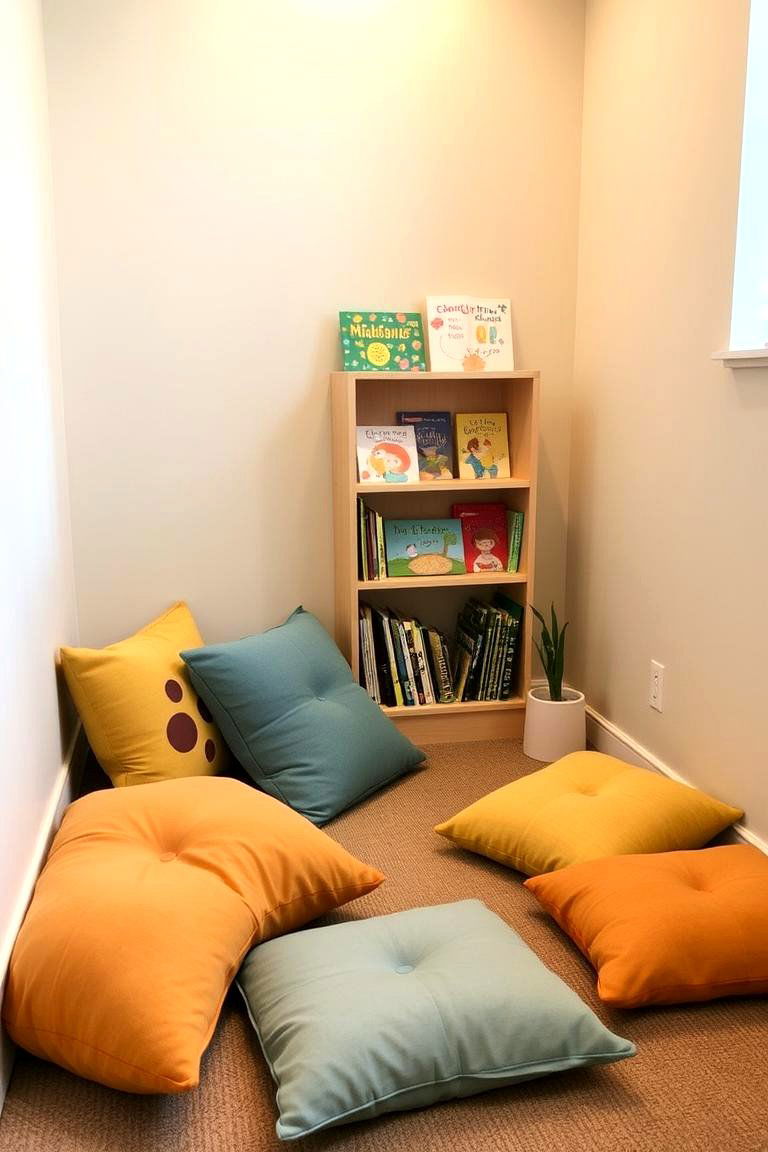
A cozy reading corner is an excellent addition to any Montessori nursery. This space allows children to explore books at their own pace and develop a love for reading early on. Soft cushions, floor rugs, and shelves filled with colorful, age-appropriate books create an inviting space for little ones to discover new stories. Encourage independent reading by selecting books with engaging illustrations and simple narratives. The reading corner can become a peaceful retreat where your child can relax and immerse themselves in the world of imagination.
6. Sensory Exploration Areas
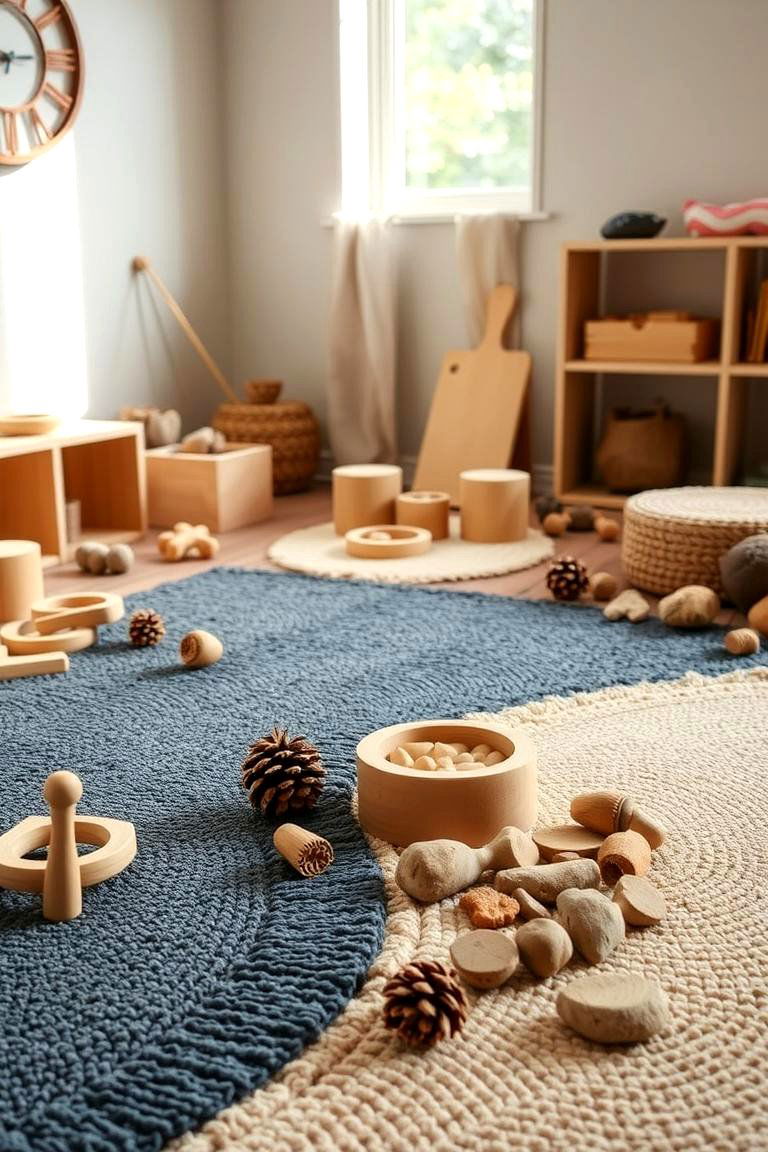
Creating areas dedicated to sensory exploration is a fundamental part of the Montessori method. These spaces are designed to stimulate all five senses, helping babies and toddlers learn through touch, sight, sound, taste, and smell. You can incorporate materials like textured rugs, wooden toys, and natural objects for tactile exploration. Arrange these items in an accessible way, allowing your child to engage with them independently. Sensory areas enhance cognitive development, motor skills, and help your child form connections with the world around them.
7. Simple, Neutral Color Palette
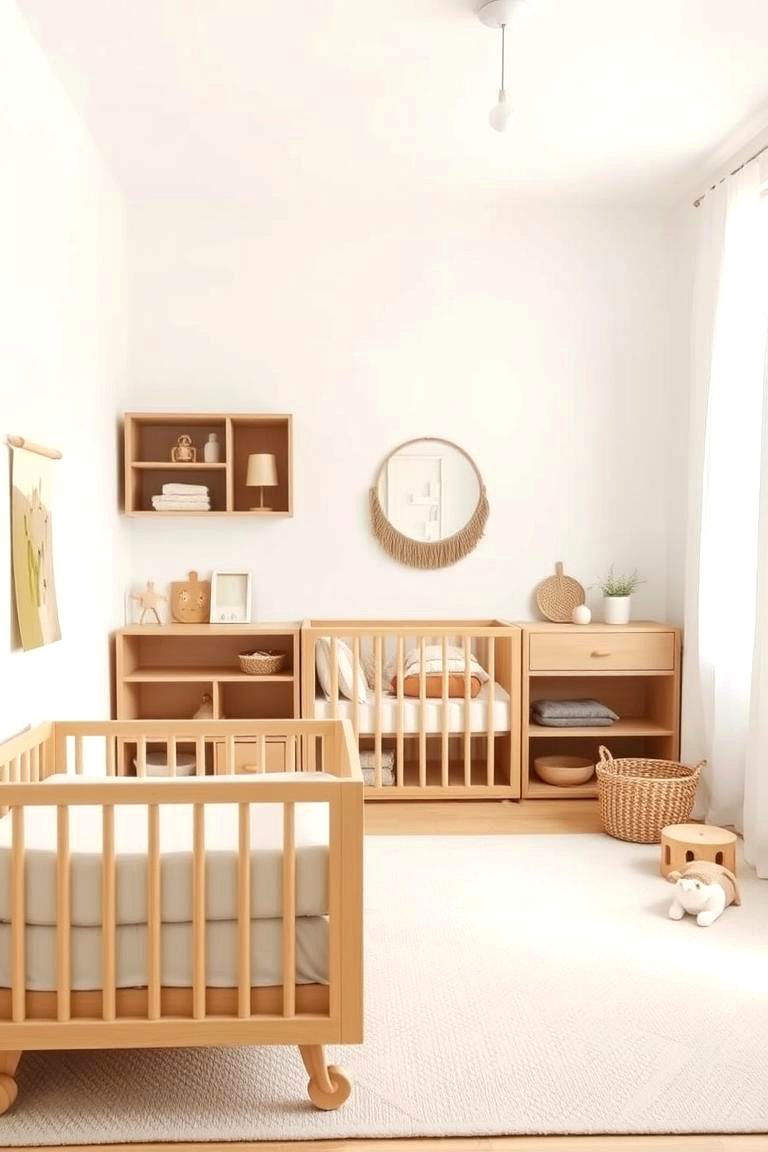
A Montessori nursery often features a neutral color palette, which supports a calm and focused environment. Soft whites, creams, grays, and earthy tones allow children to focus on their activities without the distraction of bright, overwhelming colors. A minimalist approach to colors helps promote tranquility and gives room for the child’s creativity to shine. Accent the space with gentle touches of color through accessories like cushions, wall art, or rugs, but ensure the overall space remains serene and uncluttered.
8. Incorporating Montessori Rugs
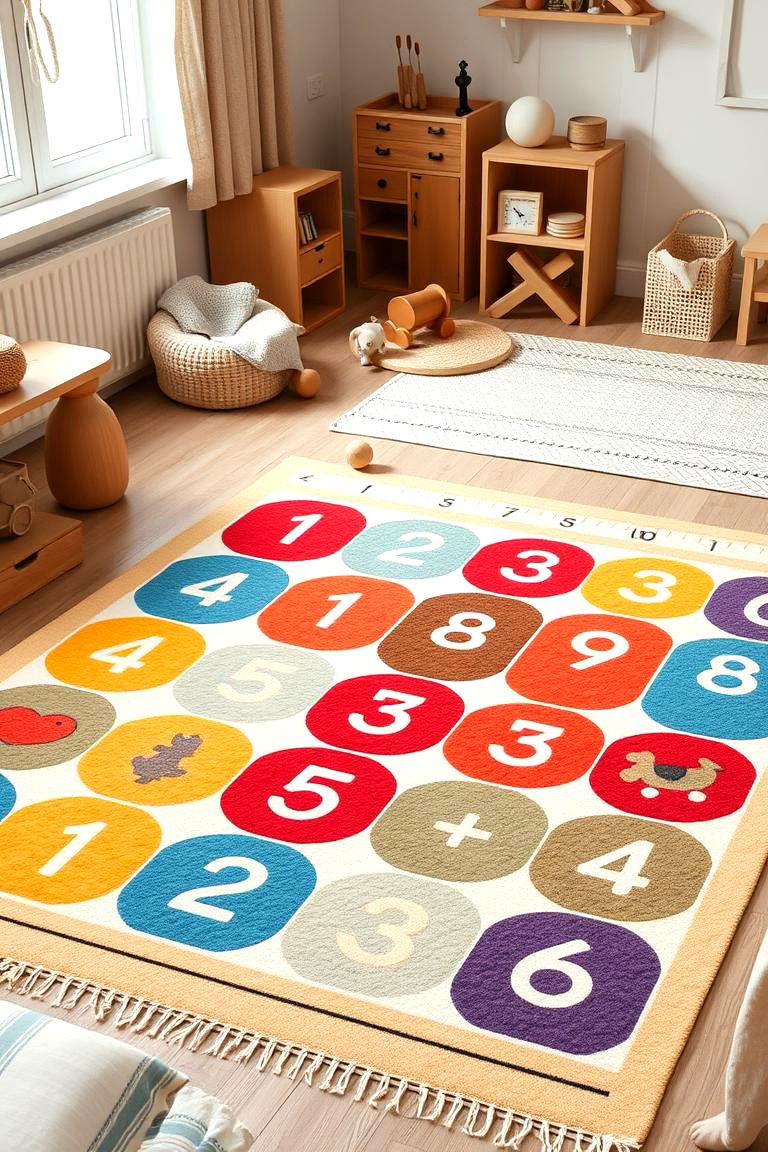
Montessori rugs are not just decorative—they serve a practical purpose in the nursery. These rugs define areas for activities, offering a designated space for play or learning. Many Montessori rugs are designed with playful yet educational patterns, such as numbers, letters, or animals. A rug provides a comfortable surface for your child to sit on while playing or reading. It can also serve as a clear boundary for different activities, making the space feel organized and intentional.
9. Nature-Inspired Décor
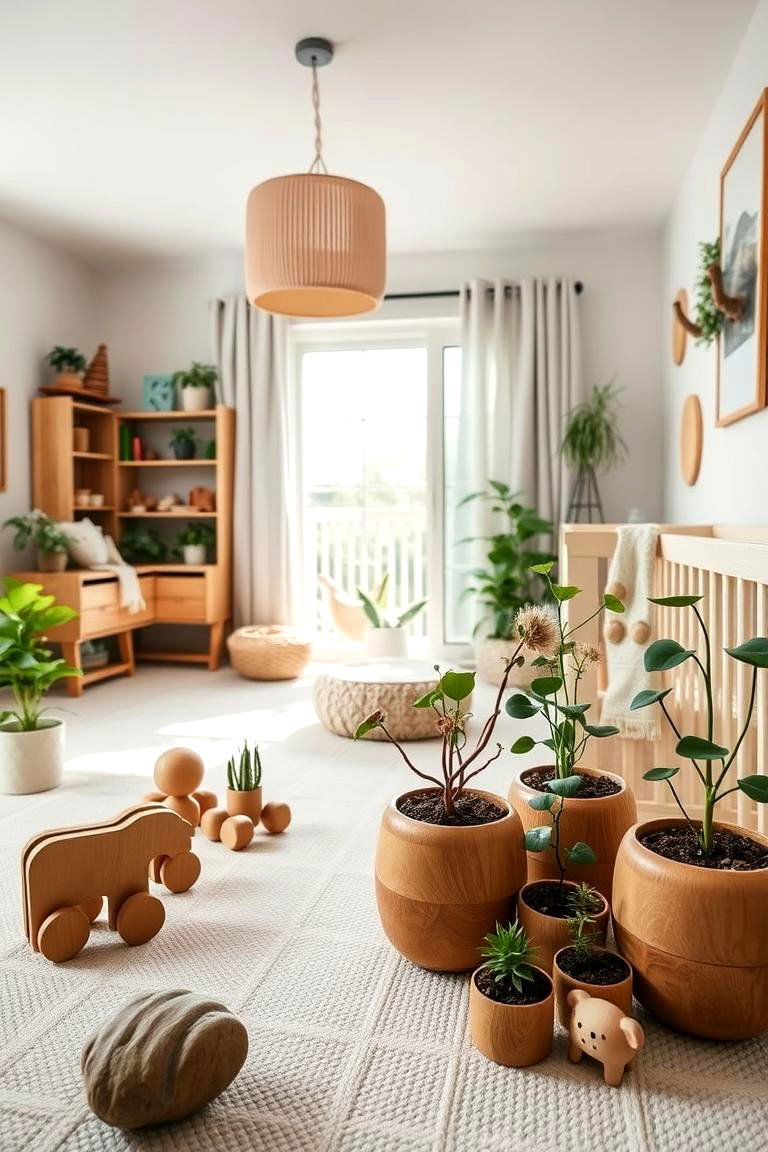
Incorporating elements of nature into the nursery can support a child’s connection to the natural world. Consider adding wooden toys, plant life, or nature-inspired artwork to enhance the space. Montessori design encourages children to explore and appreciate the outdoors, so bringing natural elements inside can foster a deeper sense of curiosity. Wooden furniture, open windows for fresh air, and plants like succulents or indoor flowers can brighten up the room and add to the peaceful, organic atmosphere.
10. Practical Art Display
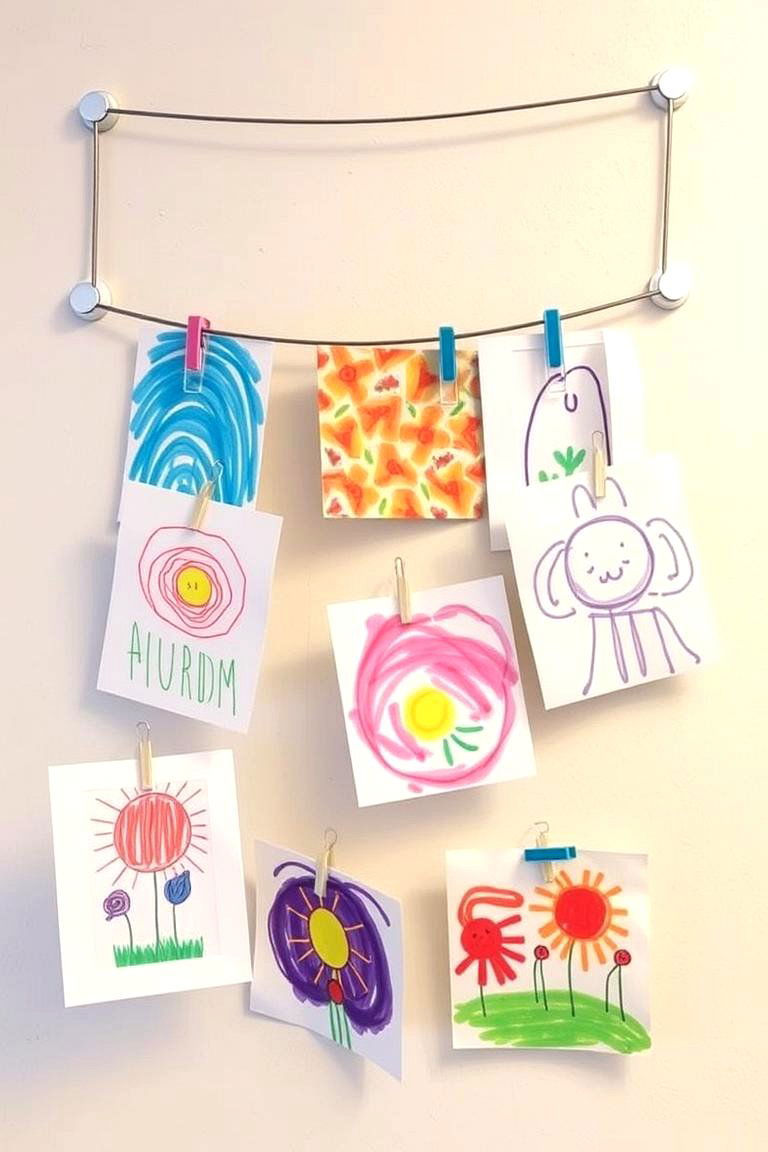
One way to encourage creativity in a Montessori nursery is through a practical art display. Instead of traditional picture frames, use a simple wire with clips to showcase your child’s artwork. This allows children to take ownership of their creative work, putting their pieces up and taking them down independently. It also provides an ever-changing display that reflects their developmental journey. Regularly swapping out art helps children feel proud of their accomplishments and encourages them to continue expressing themselves creatively.
11. Montessori-inspired Play Kitchen
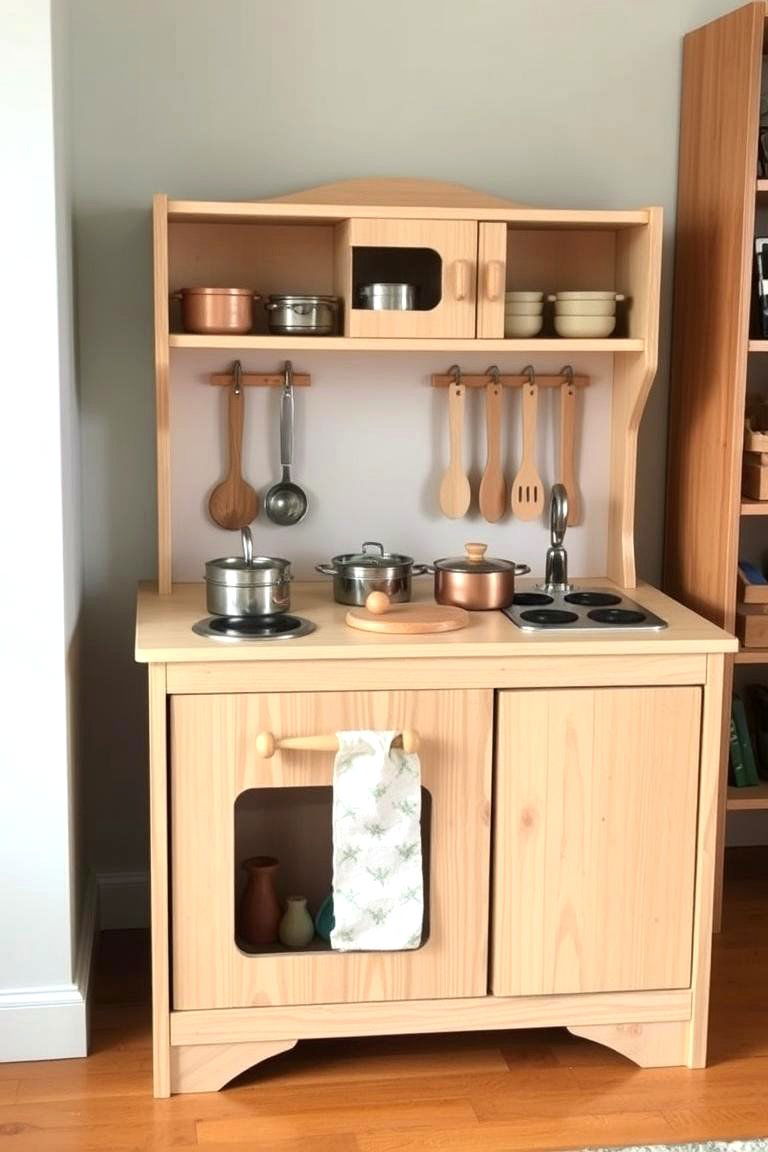
A Montessori-inspired play kitchen is an excellent way for children to engage in imaginative play while learning practical life skills. Choose a simple, wooden kitchen set with realistic features such as utensils, pots, and pans. This kind of setup helps children develop hand-eye coordination, spatial awareness, and fine motor skills while nurturing their creativity. A play kitchen can also teach valuable life lessons about meal preparation and care for their environment, which aligns perfectly with Montessori principles of self-sufficiency and responsibility.
12. A Mirror for Self-Discovery
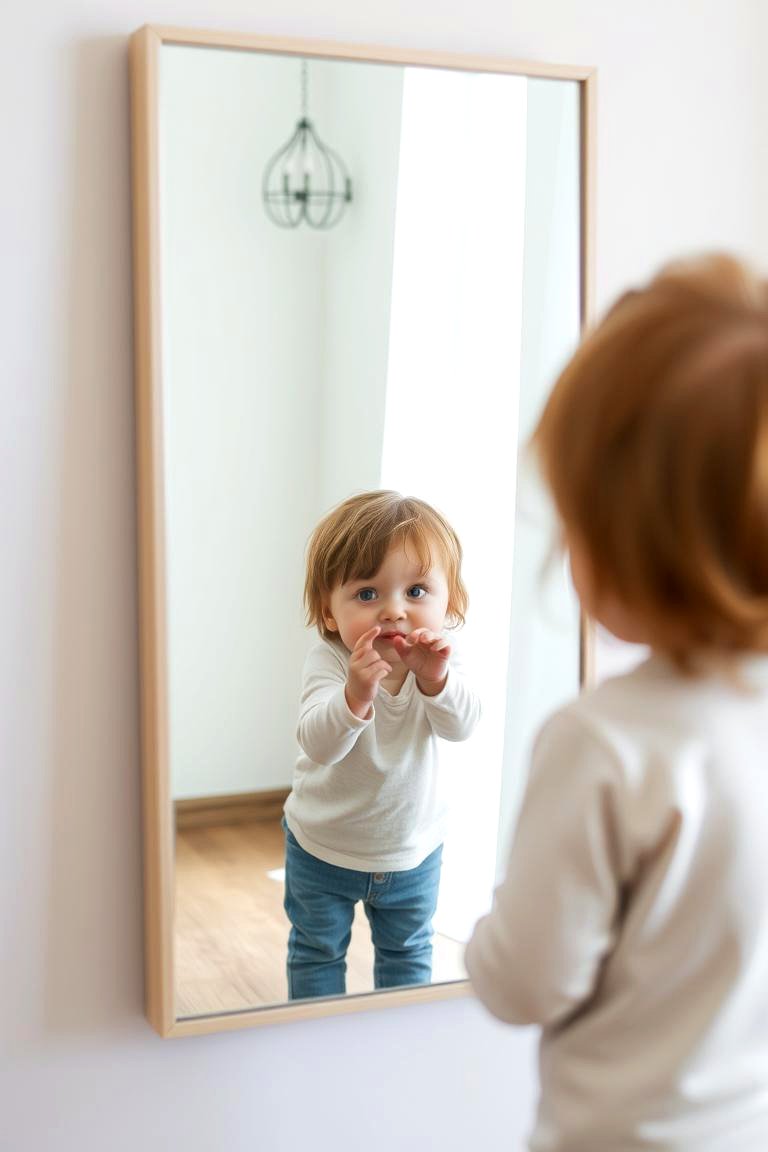
Mirrors are a fantastic tool for supporting self-discovery and developing a child’s understanding of their own body. A large, unframed mirror placed at a child’s height allows them to explore their reflection and learn about their movements. Whether it’s watching themselves practice walking or mimicking facial expressions, the mirror encourages visual development and motor skills. It also enhances their sense of self-awareness and helps children learn about their physical space. Just ensure the mirror is shatterproof and securely mounted for safety.
13. Minimalist Toy Selection
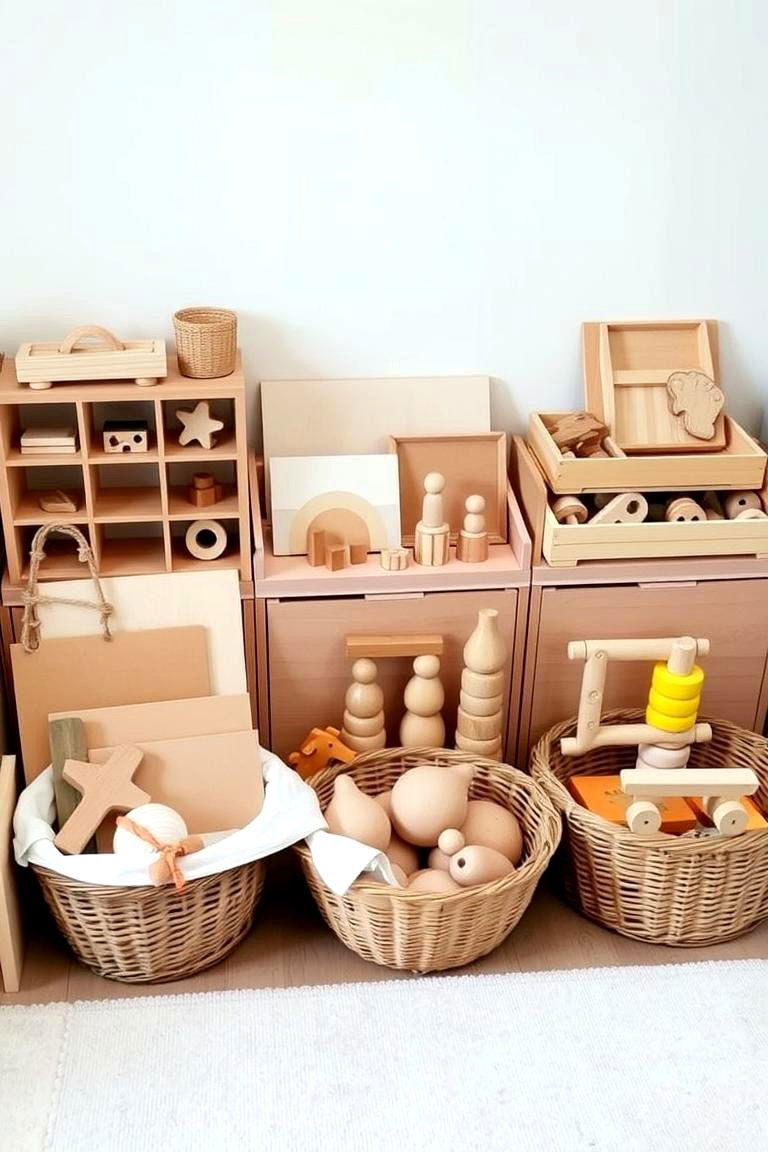
Montessori nurseries prioritize quality over quantity when it comes to toys. Rather than overwhelming children with a cluttered space filled with too many items, a minimalist approach encourages children to engage deeply with a few carefully chosen toys. Opt for wooden toys, puzzles, stacking blocks, and simple musical instruments—items that stimulate imagination and learning. This approach not only reduces distractions but also promotes a more intentional and focused way of playing, helping children develop their problem-solving and motor skills.
14. Floor Mats for Play and Learning
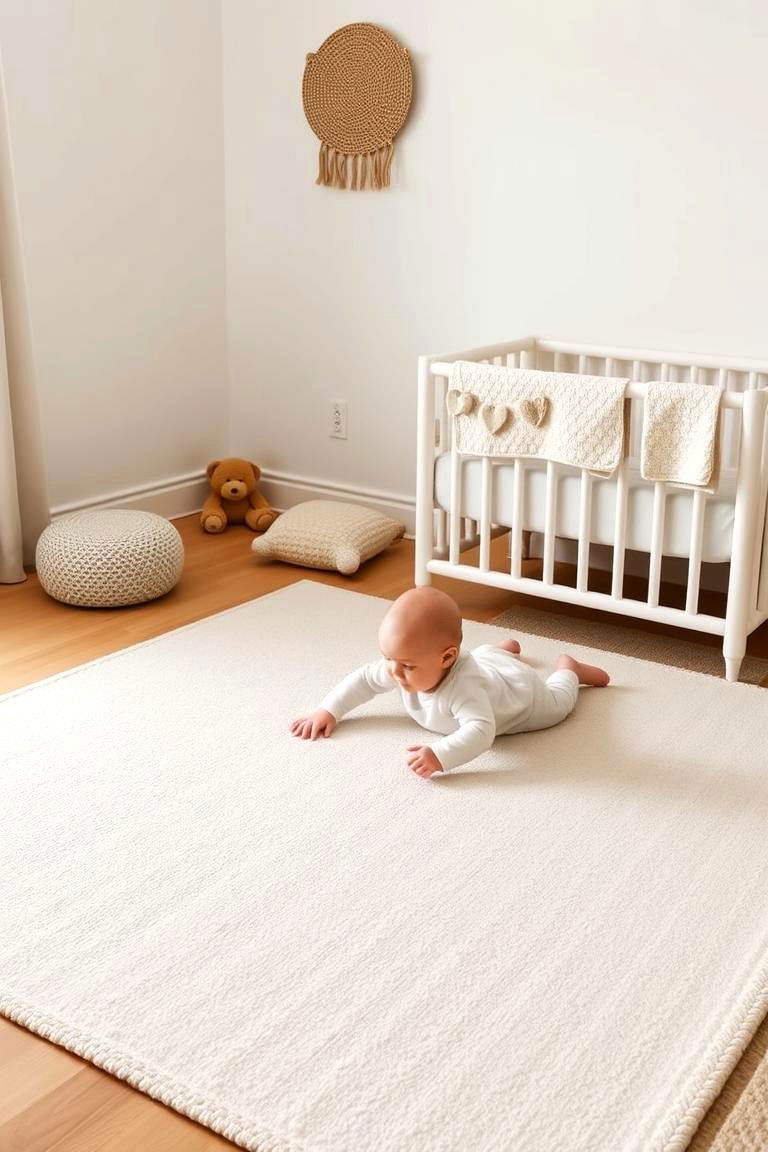
Floor mats are an essential feature in a Montessori nursery. These mats create a comfortable, soft surface for babies to sit, roll, or crawl on while exploring their environment. A simple, cushioned mat can also define an activity zone for learning and play. By keeping the floor space clear and accessible, you create a child-centered environment that fosters independence and active exploration. Mats made from natural materials like cotton or wool are particularly well-suited for a Montessori-inspired space, providing comfort and durability.
15. Montessori Bed or Floor Mattress
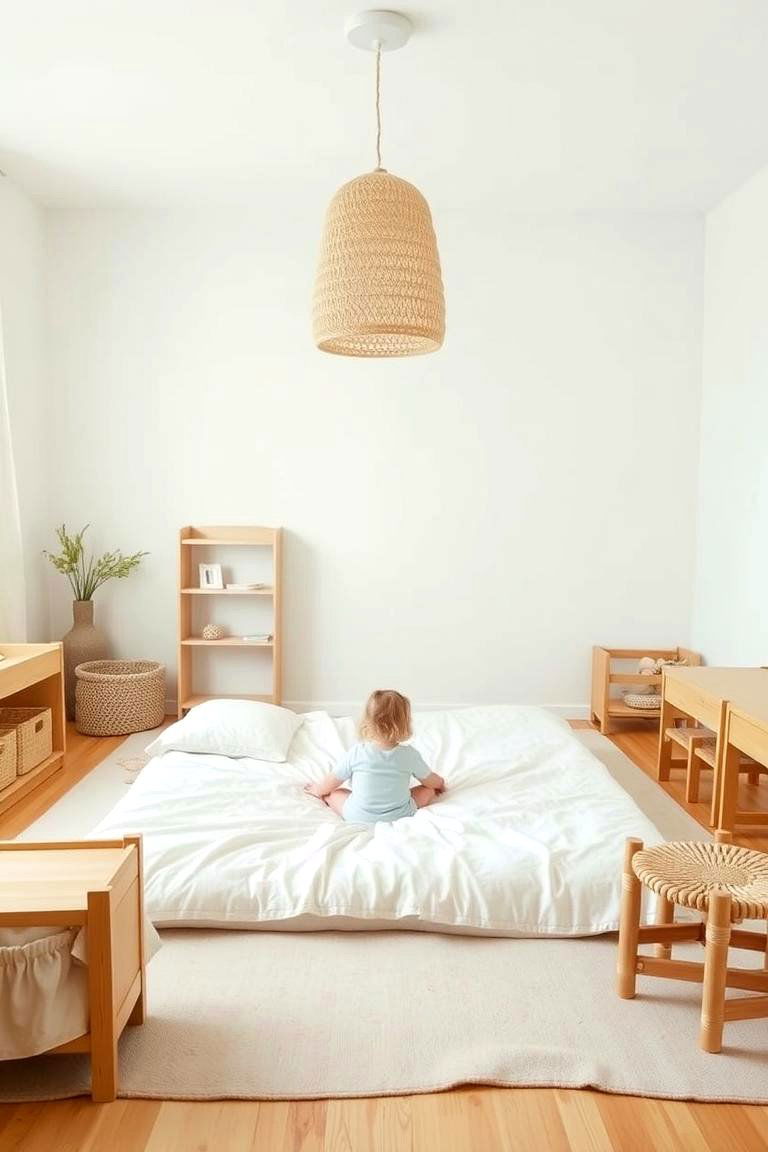
Instead of a traditional crib, many Montessori nurseries feature a low bed or floor mattress that promotes independence. This allows babies and toddlers to climb in and out of bed freely, giving them a sense of autonomy. The bed encourages self-regulation as children can choose when to sleep and when to get up. A floor mattress setup also makes the nursery feel more open and accessible. Keep the bedding simple and soft, creating a calming environment conducive to rest and relaxation.
16. Educational Wall Art
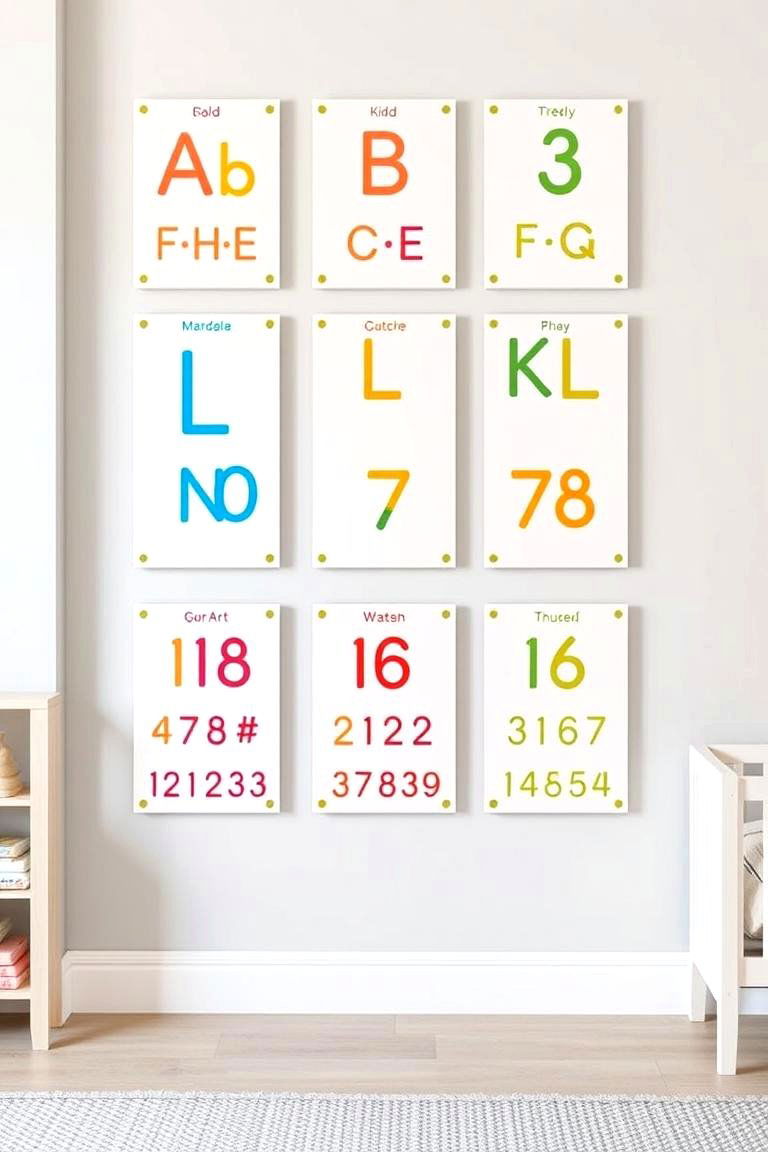
Educational wall art is a fantastic way to add both visual interest and learning opportunities to a Montessori nursery. Consider adding simple alphabet charts, number posters, or nature-inspired prints that are both decorative and educational. These pieces help children begin to recognize shapes, colors, and letters while enriching their environment. Keep the designs simple and non-distracting, focusing on content that aligns with your child’s developmental stage and encourages curiosity about the world around them.
17. Music and Sound Exploration
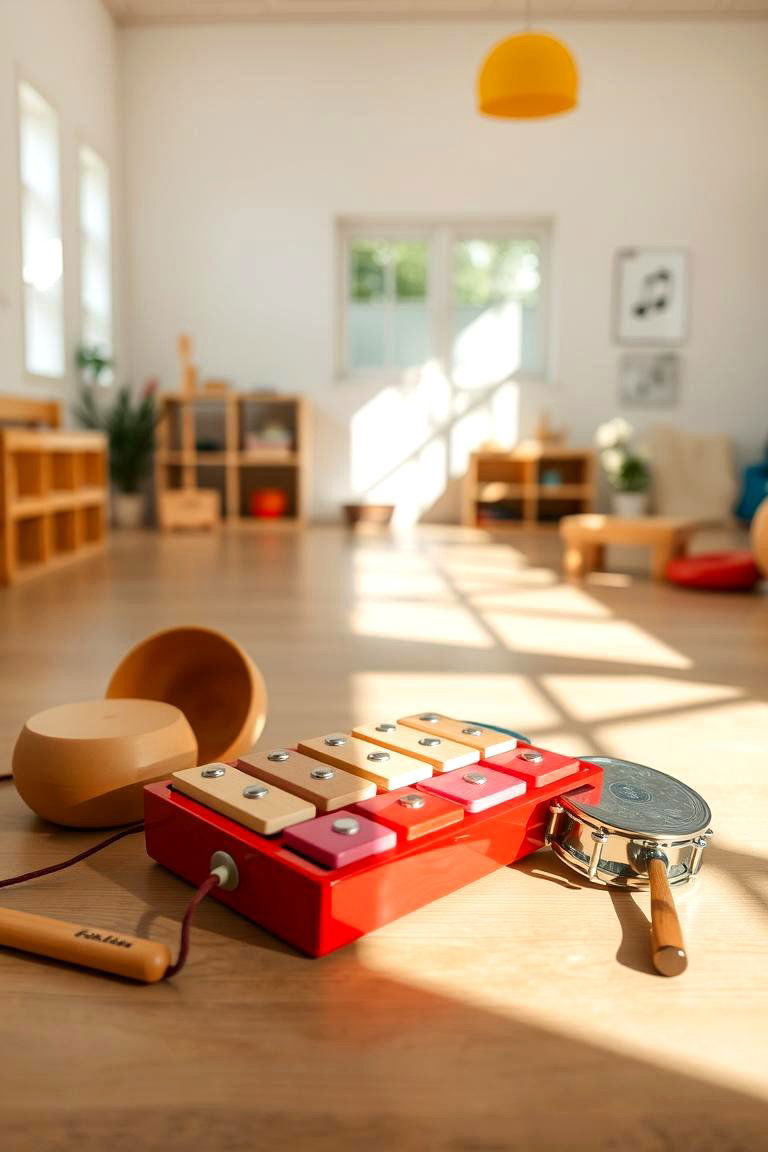
Introducing music and sound exploration into a Montessori nursery is an excellent way to stimulate cognitive and emotional development. A small set of musical instruments such as a xylophone, tambourine, or maracas encourages children to experiment with rhythm and sound. Music can also create a calming atmosphere during playtime or naptime. Regular exposure to music helps develop auditory discrimination, coordination, and emotional expression while fostering a sense of creativity and self-expression.
18. Organize with Baskets and Bins
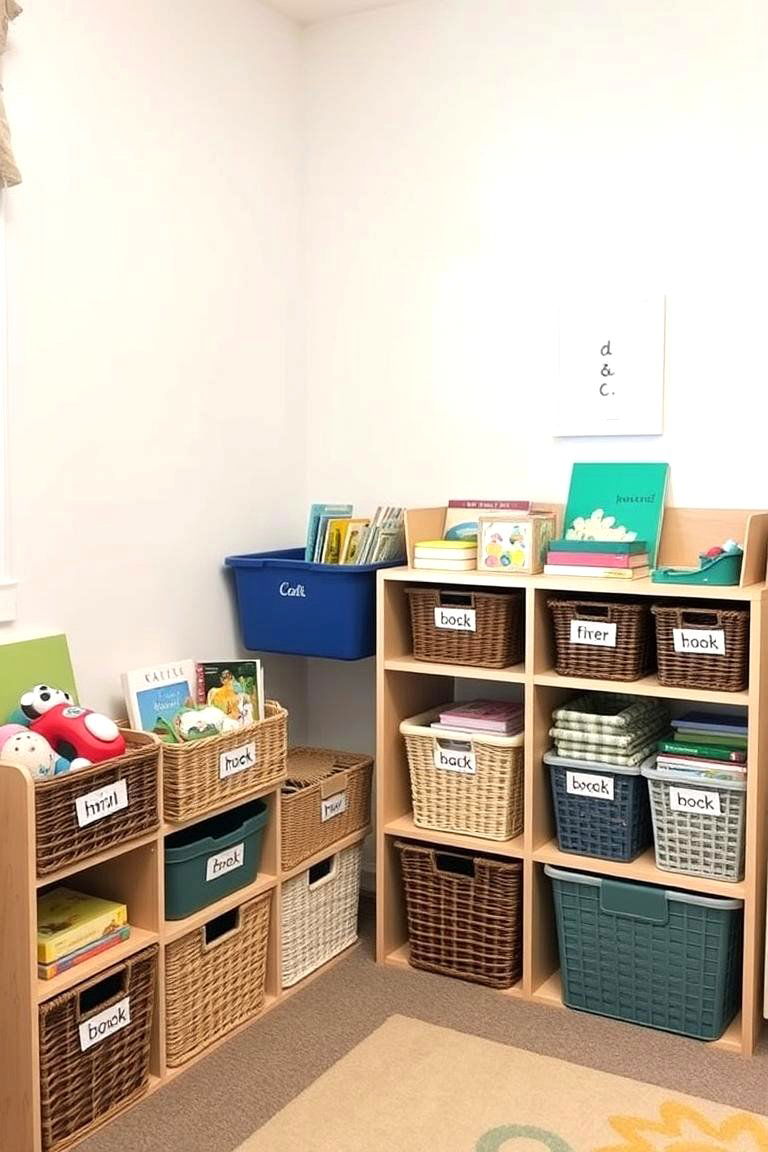
An organized nursery is key to a functional Montessori environment. Using baskets and bins helps keep toys, books, and materials neatly stored, allowing your child to maintain an organized space. Baskets are also ideal for promoting independence, as children can easily reach in and retrieve their favorite toys or books. Labeling the baskets with simple pictures or words makes it easy for kids to identify what goes where, encouraging responsibility and tidiness in their daily routine.
19. Incorporating a Balance Board
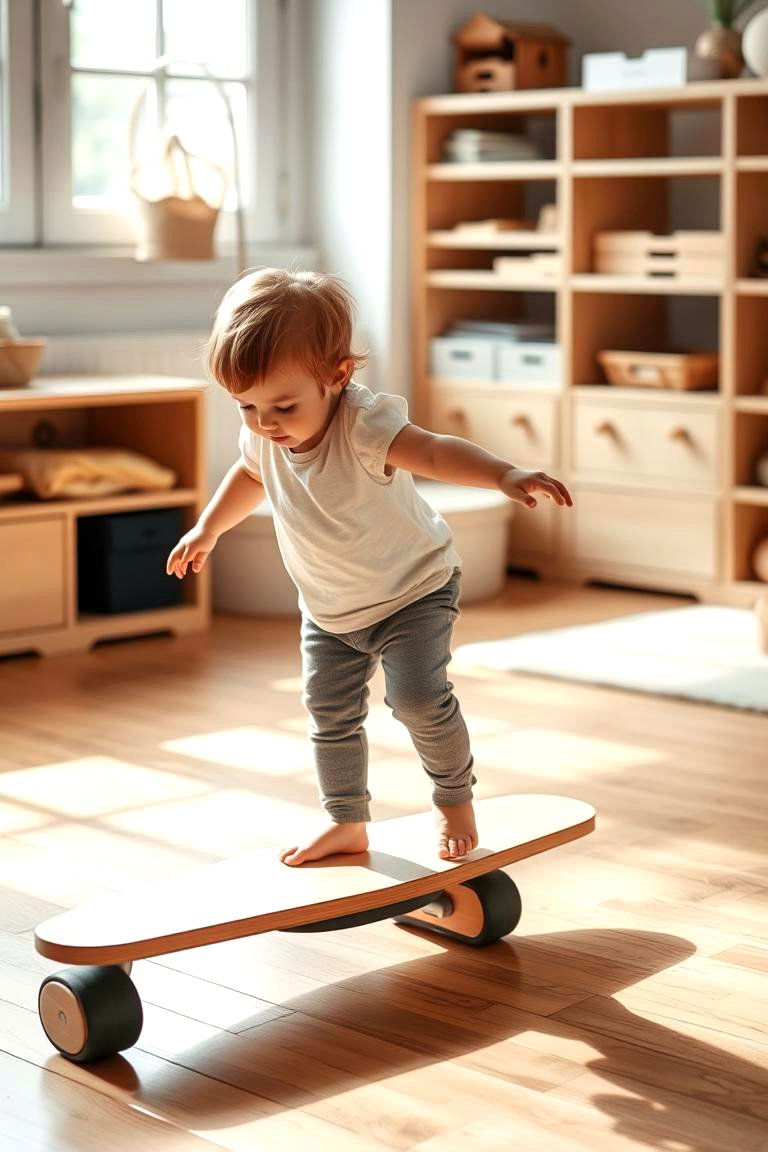
A balance board is a versatile Montessori toy that can be used for physical development and play. This simple piece of equipment can be used for rocking, balancing, or even as a surface for creative play, such as a bridge or a slide. The balance board helps to develop core strength, coordination, and balance in a fun and engaging way. It also encourages imaginative play and problem-solving, offering endless possibilities for activity while aligning with Montessori principles of movement and self-expression.
20. Nature-Inspired Learning Materials
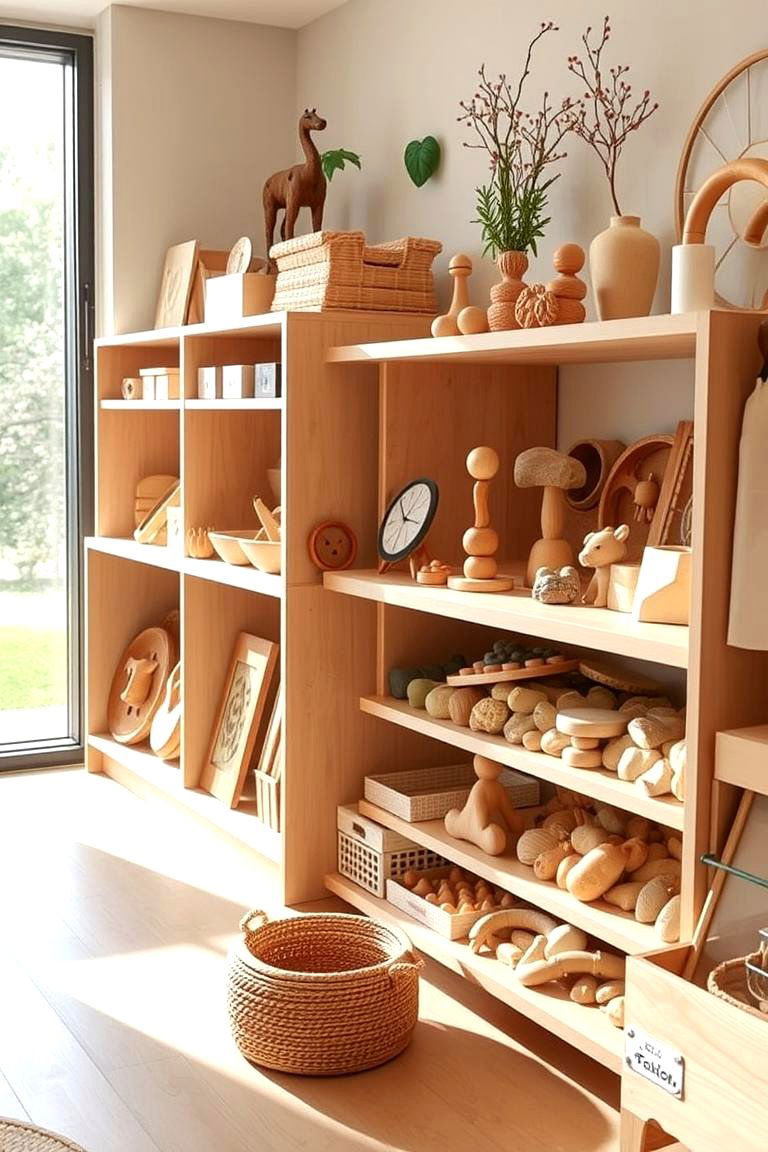
Incorporating nature-inspired learning materials is an ideal way to encourage curiosity and hands-on learning. Wooden toys, natural fibers, and real objects like shells or stones offer children the chance to connect with the world around them. By using nature-inspired materials, you can cultivate an appreciation for the environment while promoting sensory exploration. These items provide opportunities for children to engage in open-ended play, supporting creativity, fine motor development, and a deeper connection to nature.
21. Open-Ended Play Space
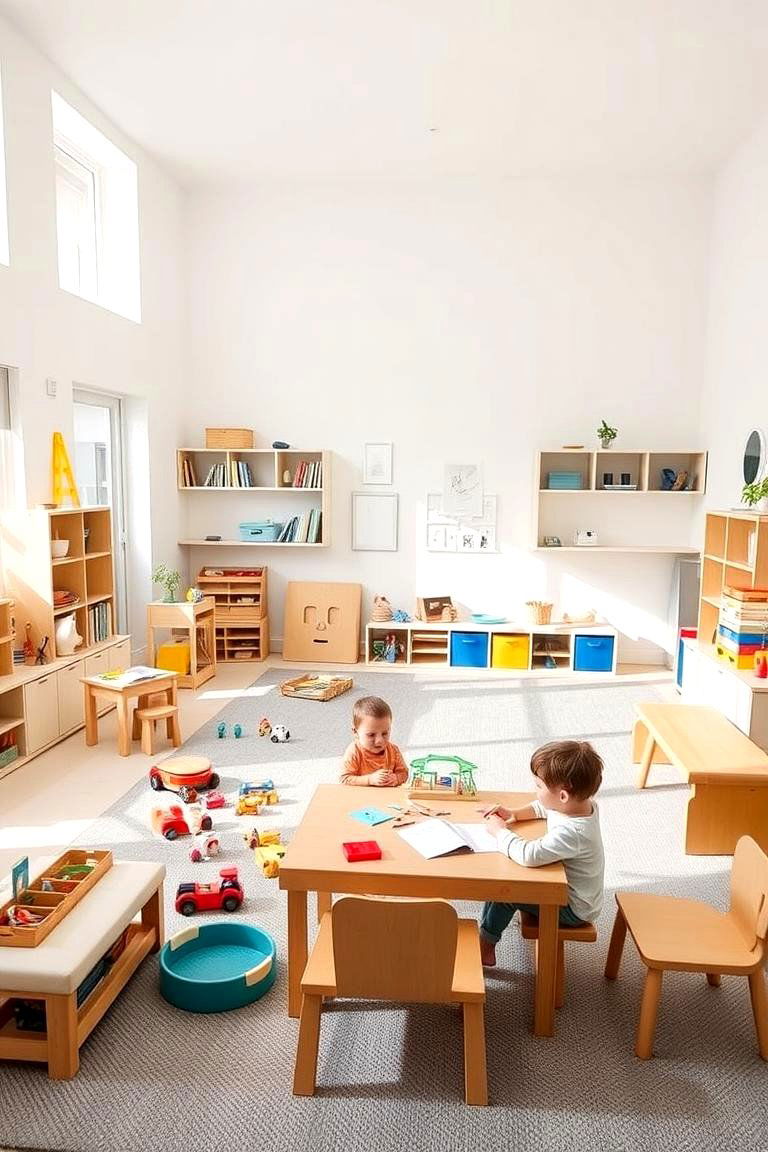
An open-ended play space encourages creativity and freedom. This type of area provides a blank canvas for children to explore various activities like building, drawing, or imaginative play without limitations. Use simple, versatile furniture and materials that can serve multiple functions. For instance, stacking blocks can turn into a tower, a house, or a bridge. This open-ended play approach aligns with Montessori principles, supporting cognitive development, problem-solving, and social interaction.
22. Learning Materials within Reach
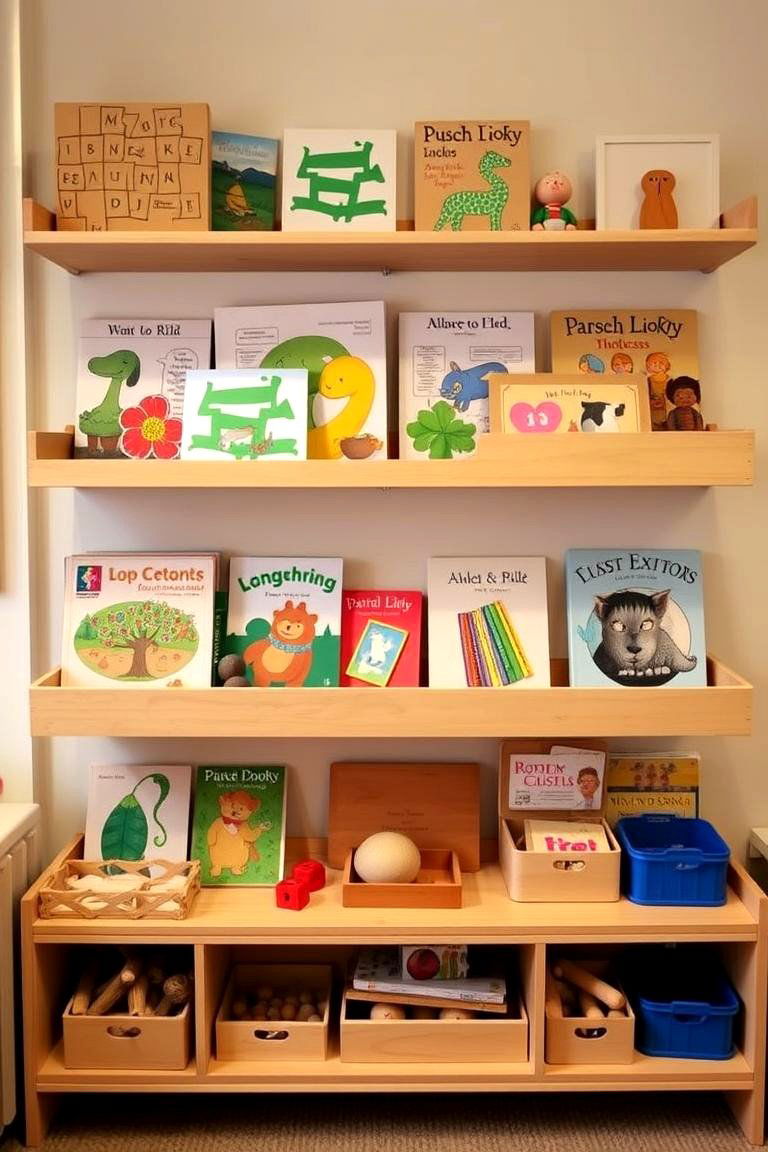
In a Montessori nursery, learning materials should be easily accessible to encourage autonomy. Place items like puzzles, books, and sensory toys on shelves or tables that are within your child’s reach. This makes it easier for them to choose their preferred activities independently, fostering a sense of freedom and self-direction. Arrange the materials thoughtfully so they are organized and visually inviting, creating a stimulating and motivating environment for exploration and learning.
23. Indoor Gardening Space
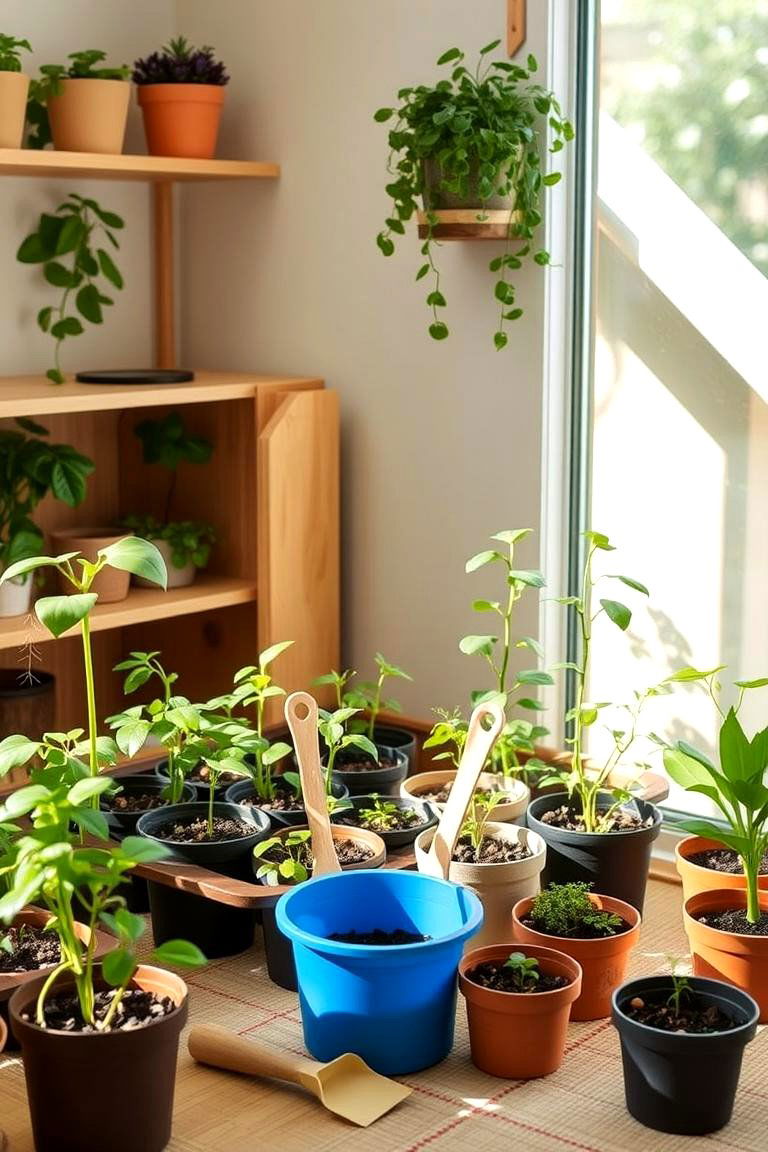
An indoor gardening space in a Montessori nursery can be an exciting way to introduce children to nature and responsibility. Growing small plants in pots or containers allows children to engage with nature and learn about growth and care. Simple activities like watering plants or observing the stages of plant growth nurture responsibility and an understanding of the environment. This experience also strengthens motor skills and gives children a sense of pride and accomplishment as they watch their plants thrive.
24. Practical Life Skills Area
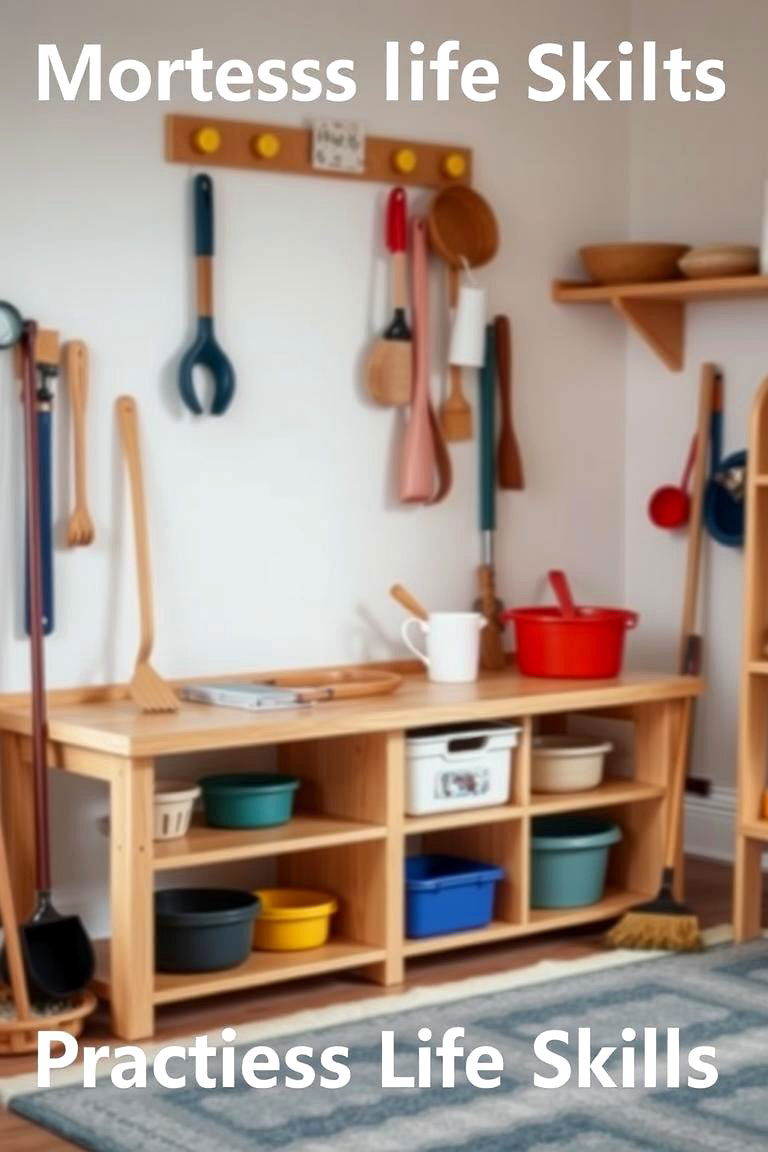
A designated area for practical life skills is a cornerstone of Montessori education. This area can include tools and activities for everyday tasks, such as pouring, sweeping, or dressing. Children learn through hands-on experiences, and the opportunity to practice daily activities encourages independence, concentration, and fine motor development. By incorporating a practical life skills area, you can help your child build confidence while learning to care for themselves and their environment.
Conclusion:
A Montessori nursery offers a child-centered environment where independence, creativity, and learning can thrive. From low-to-the-floor furniture to sensory exploration areas, each idea supports a child’s development while promoting a peaceful, organized space. By implementing these Montessori nursery ideas, you create a nurturing environment that encourages exploration, independence, and a lifelong love of learning. With a little creativity and thoughtful planning, your nursery can become a space where your child can grow, discover, and develop at their own pace.


